How to Write a Five-Year Business Plan

Noah Parsons
15 min. read
Updated October 27, 2023
Learn why the traditional way of writing a five-year business plan is often a waste of time and how to use a one-page plan instead for smarter, easier strategic planning to establish your long-term vision.
In business, it can sometimes seem hard enough to predict what’s going to happen next month, let alone three or even five years from now. But, that doesn’t mean that you shouldn’t plan for the long term. After all, your vision for the future is what gets you out of bed in the morning and motivates your team. It’s those aspirations that drive you to keep innovating and figuring out how to grow.
- What is a long-term plan?
A long-term or long-range business plan looks beyond the traditional 3-year planning window, focusing on what a business might look like 5 or even 10 years from now. A traditional 5-year business plan includes financial projections, business strategy, and roadmaps that stretch far into the future.
I’ll be honest with you, though—for most businesses, long-range business plans that stretch 5 and 10 years into the future are a waste of time. Anyone who’s seriously asking you for one doesn’t know what they’re doing and is wasting your time. Sorry if that offends some people, but it’s true.
However, there is still real value in looking at the long term. Just don’t invest the time in creating a lengthy version of your business plan with overly detailed metrics and milestones for the next five-plus years. No one knows the future and, more than likely, anything you write down now could be obsolete in the next year, next month, or even next week.
That’s where long-term strategic planning comes in. A long-term business plan like this is different from a traditional business plan in that it’s lighter on the details and more focused on your strategic direction. It has less focus on financial forecasting and a greater focus on the big picture.
Think of your long-term strategic plan as your aspirational vision for your business. It defines the ideal direction you’re aiming for but it’s not influencing your day-to-day or, potentially, even your monthly decision making.
- Are long-term business plans a waste of time?
No one knows the future. We’re all just taking the information that we have available today and making our best guesses about the future. Sometimes trends in a market are pretty clear and your guesses will be well-founded. Other times, you’re trying to look around a corner and hoping that your intuition about what comes next is correct.
Now, I’m not saying that thinking about the future is a waste of time. Entrepreneurs are always thinking about the future. They have to have some degree of faith and certainty about what customers are going to want in the future. Successful entrepreneurs do actually predict the future — they know what customers are going to want and when they’re going to want it.

Entrepreneurship is unpredictable
Successful entrepreneurs are also often wrong. They make mistakes just like the rest of us. The difference between successful entrepreneurs and everyone else is that they don’t let mistakes slow them down. They learn from mistakes, adjust and try again. And again. And again. It’s not about being right all the time; it’s about having the perseverance to keep trying until you get it right. For example, James Dyson, inventor of the iconic vacuum cleaner, tried out 5,126 prototypes of his invention before he found a design that worked.
So, if thinking about the future isn’t a waste of time, why are 5-year business plans a waste of time? They’re a waste of time because they typically follow the same format as a traditional business plan, where you are asked to project sales, expenses, and cash flow 5 and 10 years into the future.
Let’s be real. Sales and expense projections that far into the future are just wild guesses, especially for startups and new businesses. They’re guaranteed to be wrong and can’t be used for anything. You can’t (and shouldn’t) make decisions based on these guesses. They’re just fantasy. You hope you achieve massive year-over-year growth in sales, but there’s no guarantee that’s going to happen. And, you shouldn’t make significant spending decisions today based on the hope of massive sales 10 years from now.
Brought to you by
Create a professional business plan
Using ai and step-by-step instructions.
Secure funding
Validate ideas
Build a strategy
- Why write a long-term business plan?
So, what is the purpose of outlining a long-term plan? Here are a few key reasons why it’s still valuable to consider the future of your business without getting bogged down by the details.
Showcase your vision for investors
First, and especially important if you are raising money from investors, is your vision. Investors will want to know not only where you plan on being in a year, but where the business will be in five years. Do you anticipate launching new products or services? Will you expand internationally? Or will you find new markets to grow into?
Set long-term goals for your business
Second, you’ll want to establish goals for yourself and your team. What kinds of high-level sales targets do you hope to achieve? How big is your company going to get overtime? These goals can be used to motivate your team and even help in the hiring process as you get up and running.
That said, you don’t want to overinvest in fleshing out all the details of a long-range plan. You don’t need to figure out exactly how your expansion will work years from now or exactly how much you’ll spend on office supplies five years from now. That’s really just a waste of time.
Instead, for long-range planning, think in broad terms. A good planning process means that you’re constantly revising and refining your business plan. You’ll add more specifics as you go, creating a detailed plan for the next 6-12 months and a broader, vague plan for the long term.
You have a long development time
Businesses with extremely long research and development timelines do make spending decisions now based on the hope of results years from now. For example, the pharmaceutical industry and medical device industry have to make these bets all the time. The R&D required to take a concept from idea to proven product with regulatory approval can take years for these industries, so long-range planning in these cases is a must. A handful of other industries also have similar development timelines, but these are the exceptions, not the rule.
Your business is well-established and predictable
Long-term, detailed planning can make more sense for businesses that are extremely well established and have long histories of consistent sales and expenses with predictable growth. But, even for those businesses, predictability means quite the opposite of stability. The chances that you’ll be disrupted in the marketplace by a new company, or the changing needs and desires of your customers, is extremely high. So, most likely, those long-range predictions of sales and profits are pretty useless.
- What a 5-year plan should look like
With the exception of R&D-heavy businesses, most 5-year business plans should be more like vision statements than traditional business plans. They should explain your vision for the future, but skip the details of detailed sales projections and expense budgets.
Your vision for your business should explain the types of products and services that you hope to offer in the future and the types of customers that you hope to serve. Your plan should outline who you plan to serve now and how you plan to expand if you are successful.
This kind of future vision creates a strategic roadmap. It’s not a fully detailed plan with sales forecasts and expense budgets, but a plan for getting started and then growing over time to reach your final destination.
For example, here’s a short-form version of what a long-term plan for Nike might have looked like if one had been written in the 1960s:
Nike will start by developing high-end track shoes for elite athletes. We’ll start with a focus on the North West of the US, but expand nationally as we develop brand recognition among track and field athletes. We will use sponsored athletes to spread the word about the quality and performance of our shoes. Once we have success in the track & field market segment, we believe that we will be able to successfully expand both beyond the US market and also branch out into other sports, with an initial focus on basketball.
Leadership and brand awareness in a sport such as basketball will enable us to cross over from the athlete market into the consumer market. This will lead to significant business growth in the consumer segment and allow for expansion into additional sports, fashion, and casual markets in addition to building a strong apparel brand.
Interestingly enough, Nike (to my knowledge) never wrote out a long-range business plan. They developed their plans as they grew, building the proverbial airplane as it took off.
But, if you have this kind of vision for your business, it’s useful to articulate it. Your employees will want to know what your vision is and your investors will want to know as well. They want to know that you, as an entrepreneur, are looking beyond tomorrow and into the future months and years ahead.
- How to write a five-year business plan
Writing out your long-term vision for your business is a useful exercise. It can bring a sense of stability and solidify key performance indicators and broad milestones that drive your business.
Developing a long-range business plan is really just an extension of your regular business planning process. A typical business plan covers the next one to three years, documenting your target market, marketing strategy, and product or service offerings for that time period.
A five-year plan expands off of that initial strategy and discusses what your business might do in the years to come. However, as I’ve mentioned before, creating a fully detailed five-year business plan will be a waste of time.
Here’s a quick guide to writing a business plan that looks further into the future without wasting your time:
1. Develop your one-page plan
As with all business planning, we recommend that you start with a one-page business plan. It provides a snapshot of what you’re hoping to achieve in the immediate term by outlining your core business strategy, target market, and business model.
A one-page plan is the foundation of all other planning because it’s the document that you’ll keep the most current. It’s also the easiest to update and share with business partners. You will typically highlight up to three years of revenue and profit goals as well as milestones that you hope to achieve in the near term.
Check out our guide to building your one-page plan and download a free template to get started.
2. Determine if you need a traditional business plan
Unlike a one-page business plan, a traditional business plan is more detailed and is typically written in long-form prose. A traditional business plan is usually 10-20 pages long and contains details about your product or service, summaries of the market research that you’ve conducted, and details about your competition. Read our complete guide to writing a business plan .
Companies that write traditional business plans typically have a “business plan event” where a complete business plan is required. Business plan events are usually part of the fundraising process. During fundraising, lenders and investors may ask to see a detailed plan and it’s important to be ready if that request comes up.
But there are other good reasons to write a detailed business plan. A detailed plan forces you to think through the details of your business and how, exactly, you’re going to build your business. Detailed plans encourage you to think through your business strategy, your target market, and your competition carefully. A good business plan ensures that your strategy is complete and fleshed out, not just a collection of vague ideas.
A traditional business plan is also a good foundation for a long-term business plan and I recommend that you expand your lean business plan into a complete business plan if you intend to create plans for more than three years into the future.
3. Develop long-term goals and growth targets
As you work on your business plan, you’ll need to think about where you want to be in 5+ years. A good exercise is to envision what your business will look like. How many employees will you have? How many locations will you serve? Will you introduce new products and services?
When you’ve envisioned where you want your business to be, it’s time to turn that vision into a set of goals that you’ll document in your business plan. Each section of your business plan will be expanded to highlight where you want to be in the future. For example, in your target market section, you will start by describing your initial target market. Then you’ll proceed to describe the markets that you hope to reach in 3-5 years.
To accompany your long-term goals, you’ll also need to establish revenue targets that you think you’ll need to meet to achieve your goals. It’s important to also think about the expenses you’re going to incur in order to grow your business.
For long-range planning, I recommend thinking about your expenses in broad buckets such as “marketing” and “product development” without getting bogged down in too much detail. Think about what percentage of your sales you’ll spend on each of these broad buckets. For example, marketing spending might be 20% of sales.
4. Develop a 3-5 year strategic plan
Your goals and growth targets are “what” you want to achieve. Your strategy is “how” you’re going to achieve it.
Use your business plan to document your strategy for growth. You might be expanding your product offering, expanding your market, or some combination of the two. You’ll need to think about exactly how this process will happen over the next 3-5 years.
A good way to document your strategy is to use milestones. These are interim goals that you’ll set to mark your progress along the way to your larger goal. For example, you may have a goal to expand your business nationally from your initial regional presence. You probably won’t expand across the country all at once, though. Most likely, you’ll expand into certain regions one at a time and grow to have a national presence over time. Your strategy will be the order of the regions that you plan on expanding into and why you pick certain regions over others.
Your 3-5 year strategy may also include what’s called an “exit strategy”. This part of a business plan is often required if you’re raising money from investors. They’ll want to know how they’ll eventually get their money back. An “exit” can be the sale of your business or potentially going public. A typical exit strategy will identify potential acquirers for your business and will show that you’ve thought about how your business might be an attractive purchase.
5. Tie your long-term plan to your one-page plan
As your business grows, you can use your long-term business plan as your north star. Your guide for where you want to end up. Use those goals to steer your business in the right direction, making small course corrections as you need to.
You’ll reflect those smaller course corrections in your one-page plan. Because it is a simple document and looks at the shorter term, it’s easier to update. The best way to do this is to set aside a small amount of time to review your plan once a month. You’ll review your financial forecast, your milestones, and your overall strategy. If things need to change, you can make those adjustments. Nothing ever goes exactly to plan, so it’s OK to make corrections as you go.
You may find that your long-term plan may also need corrections as you grow your business. You may learn things about your market that change your initial assumptions and impacts your long-range plan. This is perfectly normal. Once a quarter or so, zoom out and review your long-range plan. If you need to make corrections to your strategy and goals, that’s fine. Just keep your plan alive so that it gives you the guidance that you need over time.
- Vision setting is the purpose of long-term planning
Part of what makes entrepreneurs special is that they have a vision. They have dreams for where they want their business to go. A 5-year business plan should be about documenting that vision for the future and how your business will capitalize on that vision.
So, if someone asks you for your 5-year business plan. Don’t scramble to put together a sales forecast and budget for 5 years from now. Your best guess today will be obsolete tomorrow. Instead, focus on your vision and communicate that.
Explain where you think your business is going and what you think the market is going to be like 5 years from now. Explain what you think customers are going to want and where trends are headed and how you’re going to be there to sell the solution to the problems that exist in 5 and 10 years. Just skip the invented forecasts and fantasy budgets.
Noah is the COO at Palo Alto Software, makers of the online business plan app LivePlan. He started his career at Yahoo! and then helped start the user review site Epinions.com. From there he started a software distribution business in the UK before coming to Palo Alto Software to run the marketing and product teams.

Table of Contents
Related Articles

7 Min. Read
8 Steps to Write a Useful Internal Business Plan

6 Min. Read
Differences Between Single-Use and Standing Plans Explained

13 Min. Read
How to Write a Nonprofit Business Plan

11 Min. Read
Fundamentals of Lean Planning Explained
The Bplans Newsletter
The Bplans Weekly
Subscribe now for weekly advice and free downloadable resources to help start and grow your business.
We care about your privacy. See our privacy policy .

The quickest way to turn a business idea into a business plan
Fill-in-the-blanks and automatic financials make it easy.
No thanks, I prefer writing 40-page documents.

Discover the world’s #1 plan building software

Researched by Consultants from Top-Tier Management Companies

Powerpoint Templates
Icon Bundle
Kpi Dashboard
Professional
Business Plans
Swot Analysis
Gantt Chart
Business Proposal
Marketing Plan
Project Management
Business Case
Business Model
Cyber Security
Business PPT
Digital Marketing
Digital Transformation
Human Resources
Product Management
Artificial Intelligence
Company Profile
Acknowledgement PPT
PPT Presentation
Reports Brochures
One Page Pitch
Interview PPT
All Categories
[Updated 2023] How to Write a Five Year Business Plan [Best Templates Included]
![business plan 5 year projections [Updated 2023] How to Write a Five Year Business Plan [Best Templates Included]](https://www.slideteam.net/wp/wp-content/uploads/2021/10/Five-Year-Business-Plan-PowerPoint-Presentation-Templates-1-1013x441.jpg)
Smriti Srivastava
Achieving a set of goals is challenging.
Maintaining the motivation and productivity to achieve business goals is even harder.
In the words of Yogi Berra, a big-league baseball player-turned-manager, “Without a plan, even the most brilliant business can get lost. You need to have goals, create milestones, and have a strategy in place to set yourself up for success.”
This is why everyone in the industry — from an interviewer looking to hire top talent to an entrepreneur who accomplishes goals systematically — splits their business plan into five years. A five-year business plan not only extends a generous period to attain the set targets but at the same time keeps everyone on their toes, removing procrastination.
But writing a five-year business plan can get tedious, messy, and, sometimes, take forever to hit the right spot.
Therefore, this blog will cover the essential steps to help you write a tremendous five-year business plan.
Chronology of writing a spectacular five-year business plan
It is quite simple. You cannot achieve something great when you don’t know your priorities, objectives, ways, and timeframe to achieve those targets. It is essential to build a five-year plan for your business as well as the outcomes and expectations related to it.
But where do you start?
Here are the five sections you must include in your plan:
#1 A clear company introduction
A brief yet effective overview of your business, its market, team structure, roles and responsibilities, company offerings, and value proposition builds the foundation for your future endeavors. You use a company overview to set the right tone at the beginning of your business plan, as it serves as the base and a direction for your audience.
Related read: How to Create an Attention-Grabbing Company Introduction Slide in 10 Minutes
#2 vision and mission statement.
You have to ensure your employees, stakeholders, investors, and potential clients understand what your company is all about and what you stand for. Your vision and mission statement helps you with it. It enlightens the audience about your future plans - where you see your company in five years and the results you will work to achieve.
Related read: Top 10 Mission and Vision Statement Templates to Guide Your Organizational Culture
#3 target market and branding.
State who your company is looking to serve and why. Provide clarity on your target market based on psychographics and demographics. And do not forget to mention the size of your target market. You have to create a framework for making your brand visible exponentially and simultaneously create a lead generation and conversion strategy.
Related read: Top 30 PowerPoint Templates to Analyze Dominant Market Drivers
#4 product overview.
Set clear priorities based on the distinction between your primary and secondary products. You need to connect your branding around the product or service core to your company. This categorization will help you establish the revenue your products generate and the impacts they create. Further, it will help modify your plans accordingly.
Related read: Top 10 One-Page Product Overview PowerPoint Templates to Drive Sales
#5 swot analysis.
Measuring your strengths, weaknesses, opportunities, and threats in the industry can help you successfully dominate the market. Therefore, your five-year business plan must include regular and timely analysis of all your business operations. There is no better way to meet targets than keeping a check on one’s activities. It will help you focus on the proprietary system of your company.
Related read: Top 50 SWOT Analysis PowerPoint Templates Used by Professionals Worldwide
Templates to nail your business plan.
Often we have countless ideas to plan our way to a successful business. But as the day-to-day grind starts, it is easy to get distracted from the end goal and stray from the path leading to our intent. We look for a north star to point us directly to our mission. So we decided to make your life a bit easier by providing our readymade and editable five-year business plan templates. You can access them below. Dive in!
Template 1: Five Year Business Plan Roadmap Template
Help your team stay on track with your future business ambitions by taking the assistance of our invigorating PowerPoint template. This content-ready template helps you visualize your work plan and present your vision impactfully. You just need to click the download link to start customizing it.
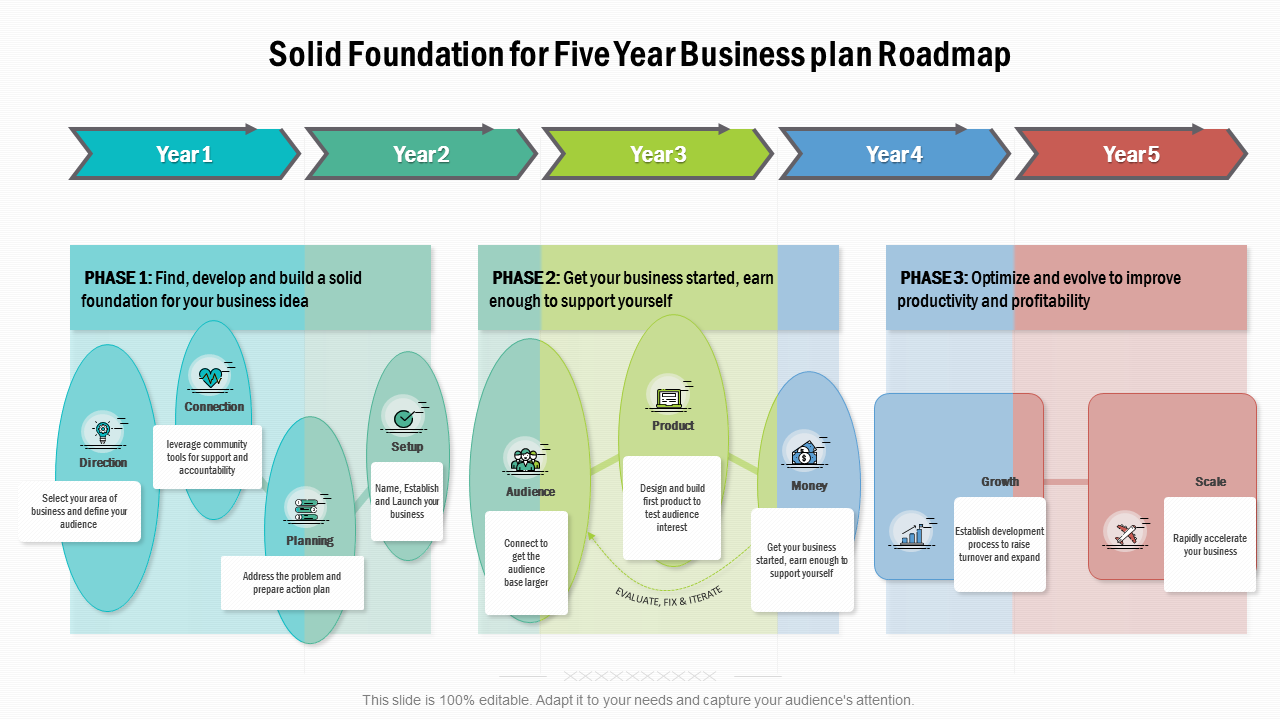
Download this template
Template 2: Key Poniters for Five Year Business Plan
Use this business plan template that includes vital pointers such as setting clear goals and objectives, conducting market research and competitor analysis, developing a comprehensive marketing strategy, creating financial projections, and establishing a system for measuring progress and adjusting your plan accordingly. By following a structured template and considering these essential elements, you can create a plan that sets your organization up for long-term success.
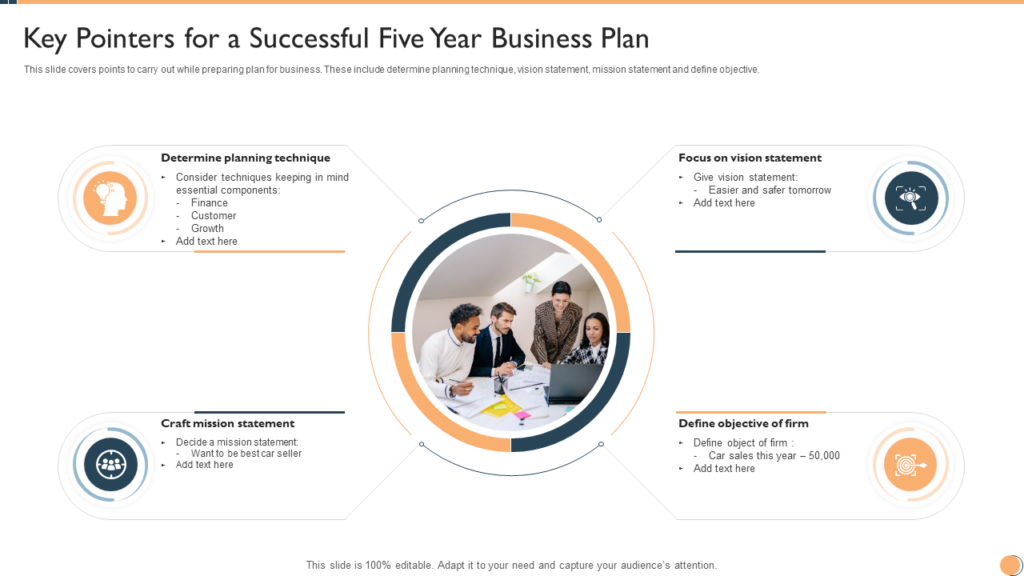
Template 3: Five Year Roadmap Timeline for Business Plan
Employ this professionally curated template to improve the success rate of your business. This template helps you track the progress of all your operational activities without any hassle. Also, our color-coded template makes it easy to comprehend and follow. So download this adaptable template to start adding your data effortlessly.
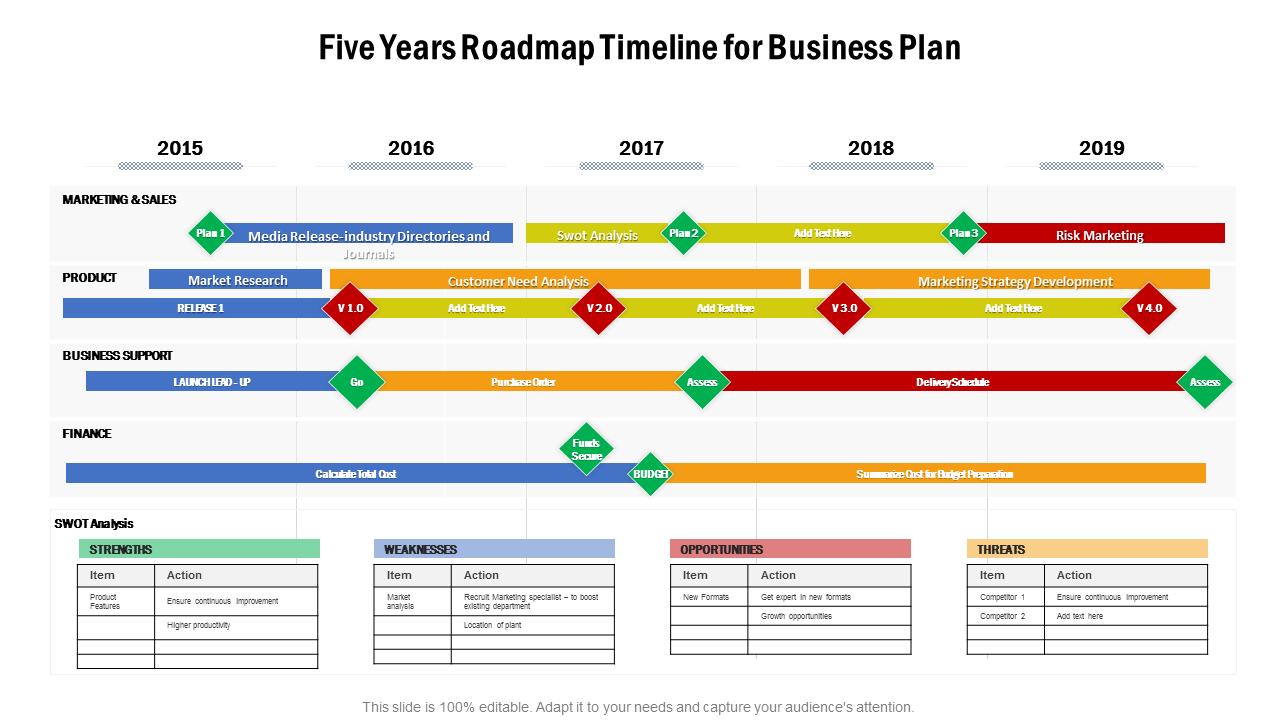
Template 4: Five-Year Business Plan Roadmap with Operations and Functions
You can utilize this template to articulate the workflow of your organization smoothly. This template allows you to write an attractive executive summary of your business operations and functions. Download the template and start assembling your key milestones immediately. Click the link below!
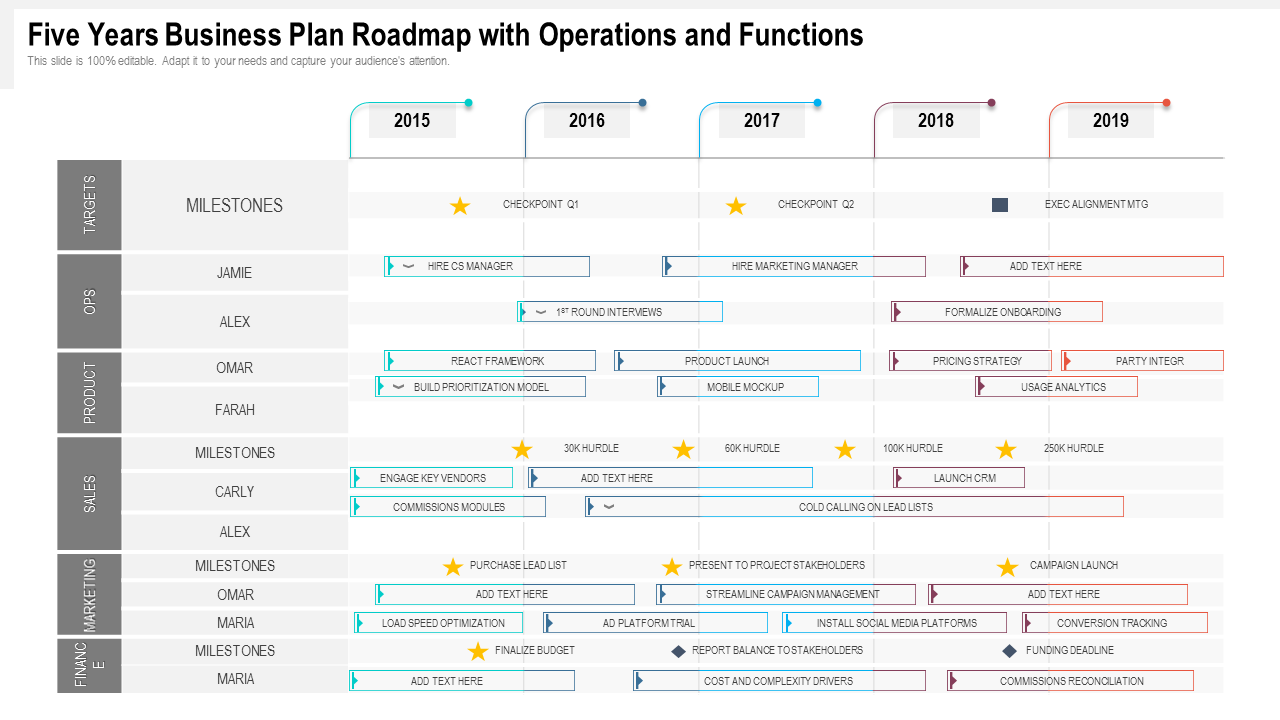
Template 5: Five Year Milestones Template
Outline the timeline for achieving future goals with the help of this template. Our experts have designed this PowerPoint template to help you summarize your vision, mission, targets, and timeframe in an easily accessible format. Grasp the attention of your employees and stakeholders right away by downloading this template.
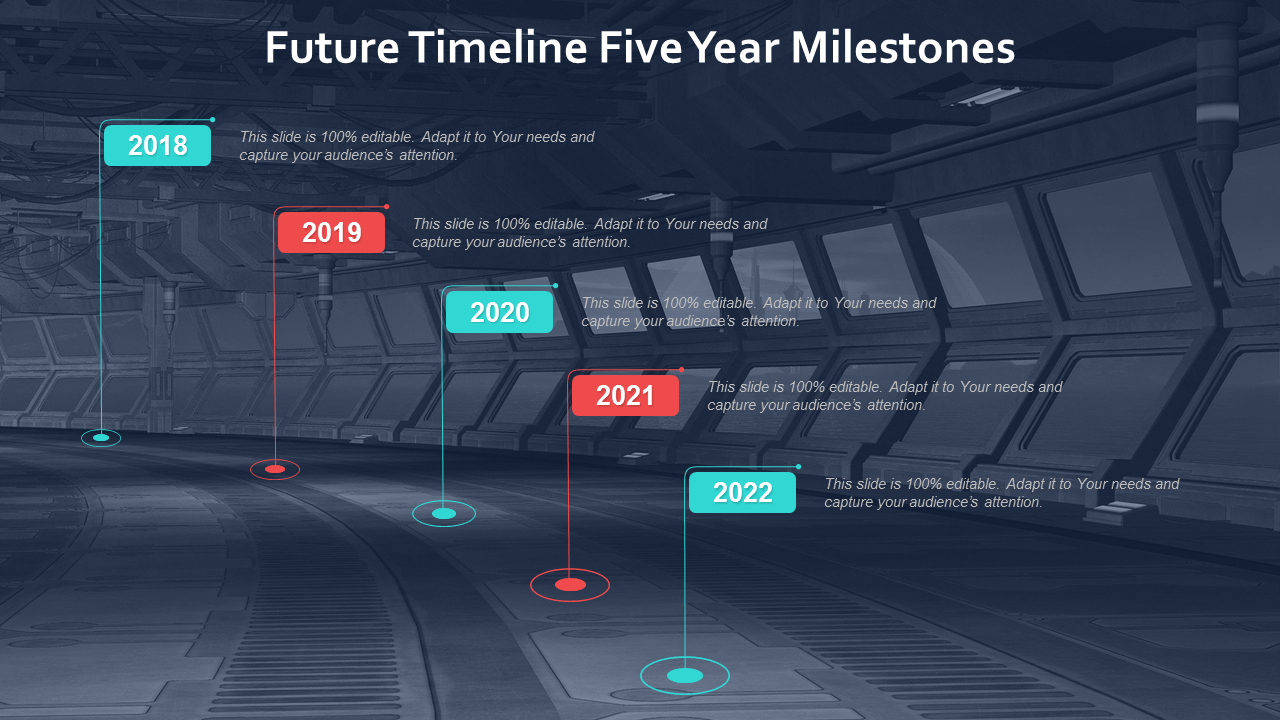
Template 6: Five-Year Roadmap for Business Planning
A comprehensive plan of action displays confidence and foresightedness. Therefore, we have curated this content-specific template to help you create a strategic roadmap for your business goals. This template distributes the target phases based on yearly milestones, thereby making it easily understandable. Grab it now!
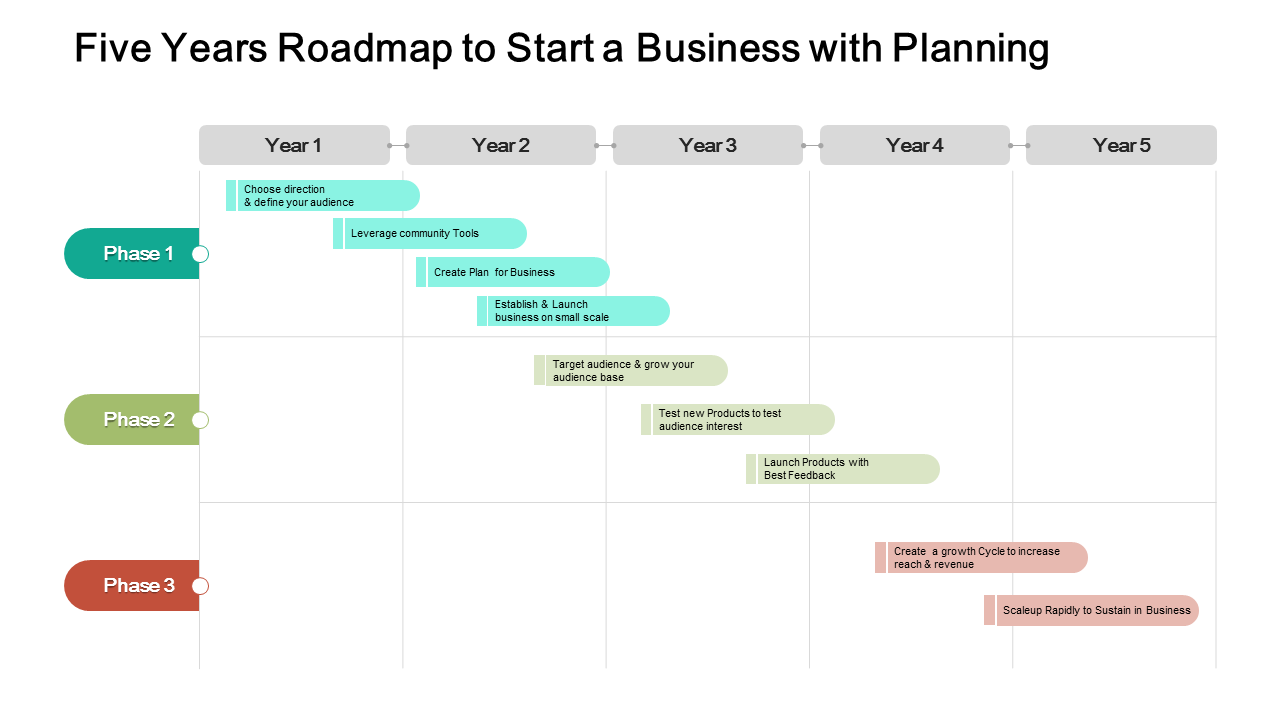
Template 7: Five Year Business Plan with Roadmap
Take your business to the next level with this five-year business roadmap with checkpoints. It includes sections for sales, product, operations, and targets set for different team members. It also includes timelines and checkpoints for processes and activities. Download this editable PowerPoint Slide now to streamline your business alignment.
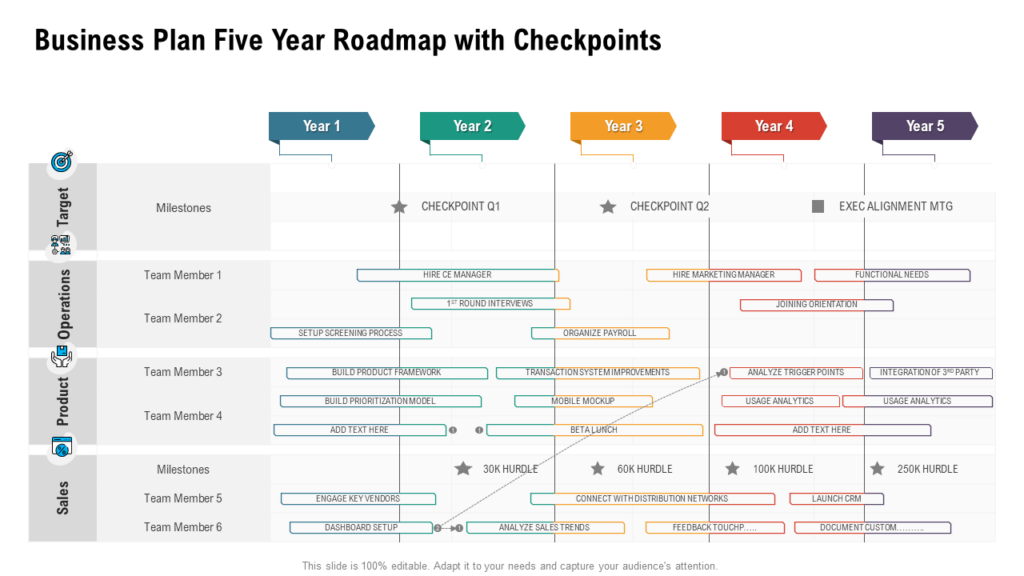
Template 8: Five Year Business Plan With Financial Projection
Make your future financial outcomes expectations loud and clear by using this PowerPoint template. Represent your business planning elements creatively by employing this template. You can even highlight your company’s ongoing functions and practices in a structured way with the assistance of our entirely adaptable PPT template.
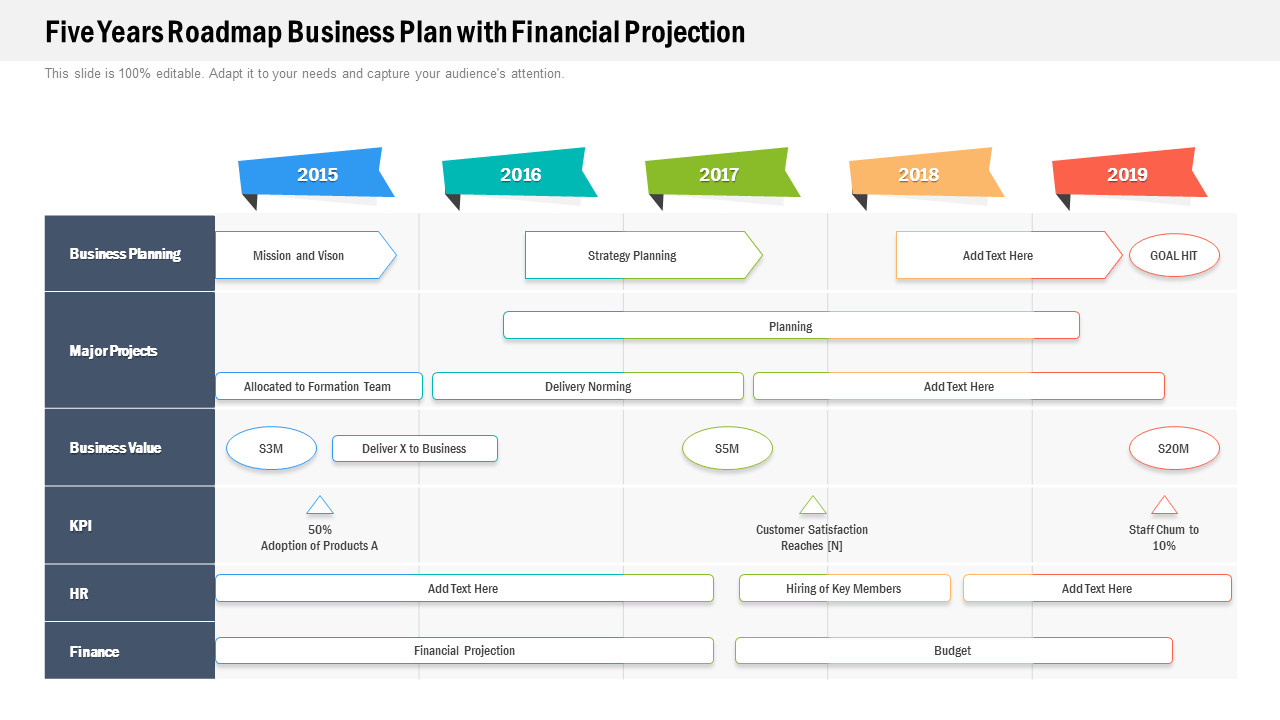
Template 9: Five Year Business Plan Implementation Roadmap
The success rate of business plans hugely depends on the plan of action, and this editable five years roadmap of the organization rightly serves the purpose. Encapsulate all the information related to the project in a well-structured manner to obtain maximum efficiency by incorporating this stunning PowerPoint slide. State the critical deliverable, steps involved, time frame, workforce allocation, and lots more in an easy-to-understand manner by utilizing this pre-designed roadmap layout. Download now!
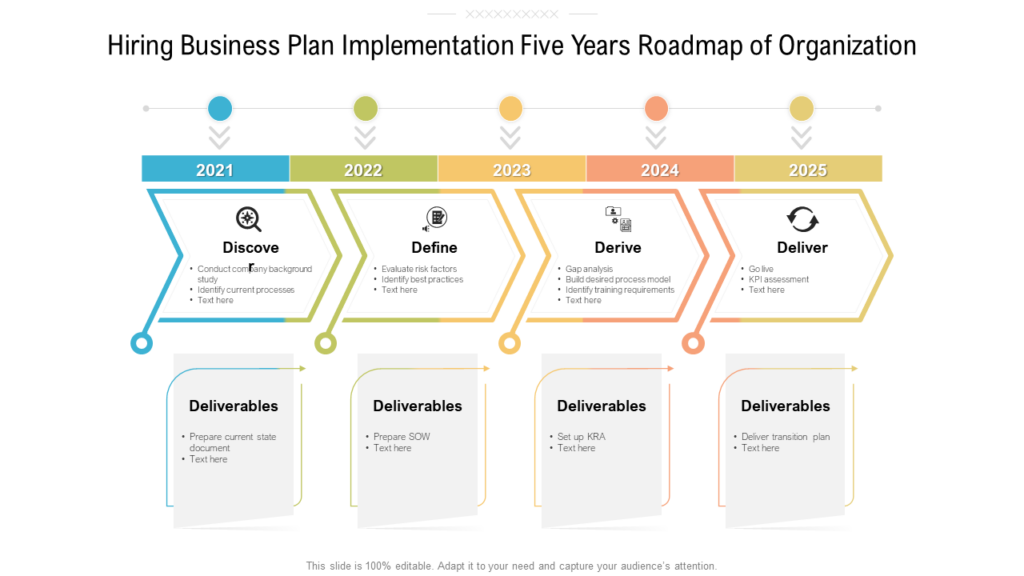
Template 10: Five Year Business Plan with Risk Status
Select this PowerPoint template to predict your future growth. Using this PPT template, you can assess potential risks that can stunt your business development in the coming years. Revamp your venture by utilizing this template as a guiding star. Download it and start with your strategic planning right away!
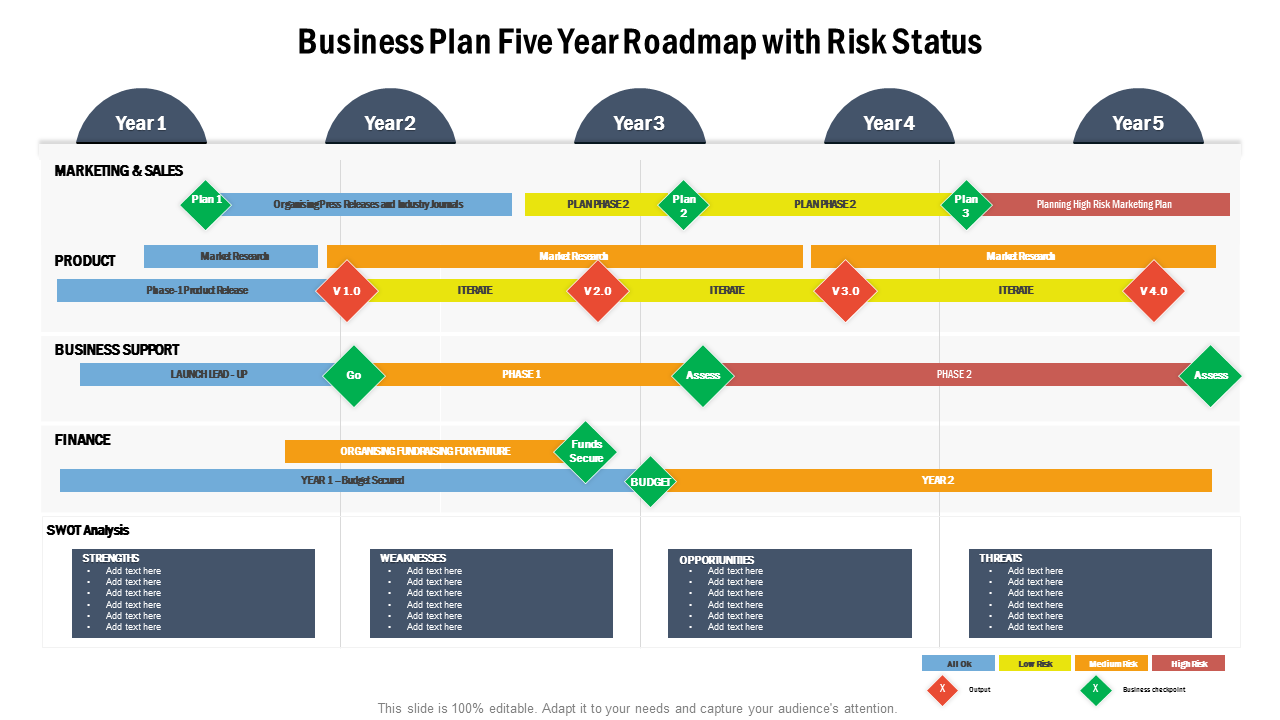
Having a strategic roadmap for handling your business operations and objectives is the only way to go. You cannot expect high profit and returns on investment without having a clear outline for the next five years of your business. With our stunning business plan ppt templates, you will definitely look confident, assertive, reliable, and foresighted.
FAQs on Five-Year Business Plan
How to write a five year business plan.
Here are some key steps to consider when writing your plan:
Define your mission and vision: Start by articulating your organization's purpose and long-term goals.
Conduct market research : Analyze your industry, identify trends, and understand your target audience.
Evaluate your competition: Analyze your competitors' strengths and weaknesses, and determine how you can differentiate yourself in the marketplace.
Develop a marketing and sales strategy: Outline how you will reach and engage with your target audience and define your pricing strategy.
Create financial projections: Develop a comprehensive financial model that includes revenue and expense projections, as well as cash flow analysis.
Establish a system for measuring progress: Determine key performance indicators (KPIs) that will help you track progress towards your goals, and create a plan for reviewing and updating your plan on a regular basis.
What is a good 5-year business plan?
A good 5-year business plan is a comprehensive document that outlines an organization's strategy for achieving its long-term goals. Here are some key elements to include in a good 5-year business plan:
Executive summary: Provide an overview of your organization's mission, vision, and goals, as well as a summary of the key elements of your plan.
Market analysis: Conduct thorough research to understand your industry, target audience, and competition.
Marketing and sales strategy: Outline how you will reach and engage with your target audience, and define your pricing strategy.
Financial projections: Develop a comprehensive financial model that includes revenue and expense projections, as well as cash flow analysis.
Organizational structure: Outline the roles and responsibilities of key personnel, and describe how your organization will be structured to achieve its goals.
Risk management: Identify potential risks and develop strategies to mitigate them.
Performance metrics: Determine key performance indicators (KPIs) that will help you track progress towards your goals, and create a plan for reviewing and updating your plan on a regular basis.
Related posts:
5 essential tips to develop a solid 5-year business plan.
- How to Design the Perfect Service Launch Presentation [Custom Launch Deck Included]
- Quarterly Business Review Presentation: All the Essential Slides You Need in Your Deck
- [Updated 2023] How to Design The Perfect Product Launch Presentation [Best Templates Included]
Liked this blog? Please recommend us

Looking to Start a Small Business? These Top 15 Printable Business Plan Templates Will Save You Time and Money
This form is protected by reCAPTCHA - the Google Privacy Policy and Terms of Service apply.

Digital revolution powerpoint presentation slides

Sales funnel results presentation layouts
3d men joinning circular jigsaw puzzles ppt graphics icons

Business Strategic Planning Template For Organizations Powerpoint Presentation Slides

Future plan powerpoint template slide

Project Management Team Powerpoint Presentation Slides

Brand marketing powerpoint presentation slides

Launching a new service powerpoint presentation with slides go to market

Agenda powerpoint slide show

Four key metrics donut chart with percentage

Engineering and technology ppt inspiration example introduction continuous process improvement

Meet our team representing in circular format

Upmetrics AI Assistant: Simplifying Business Planning through AI-Powered Insights. Learn How
How to Create a 5-Year Business Plan in 8 Easy Steps
- March 11, 2024
12 Min Read
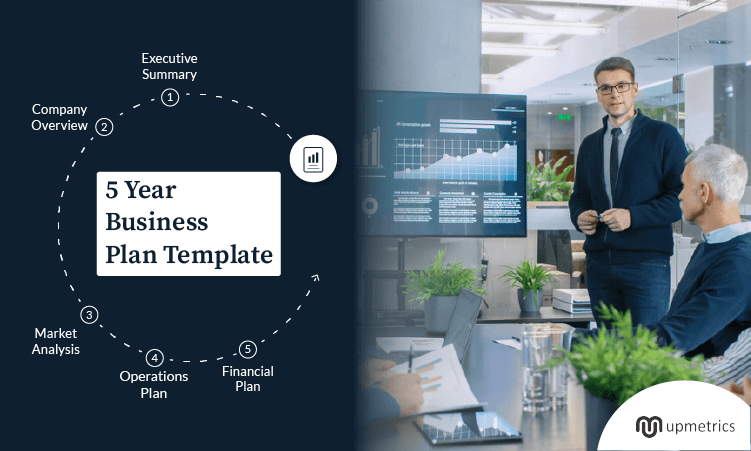
As an entrepreneur or a business owner, you know it can be challenging enough to predict business growth for the long term. And the business decisions you make today will shape your company’s future.
Well, having a strategic plan for the next three or even five years will guide you toward long-term business goals and increase the potential for success.
So, why take a chance? Keep a solid five-year business plan with you!
Need help writing a business plan from scratch? Don’t worry; we’re here to support you with our 5-year business plan template .
This will help you learn more about the business plan for 5 years and what components you should include in it. Also, it allows you to organize ideas, set realistic growth targets, and refine your business strategy that will attract investors.
Sounds good, right? Let’s get started.
What is a 5 Year Business Plan?
A 5-year business plan is a professional document that serves as a strategic roadmap for your company’s future. It outlines business goals, strategies, financial projections, and growth plans for the next five years.
It helps you set clear objectives, define target customers, allocate resources effectively, mitigate risks, adapt to changing market conditions, and make informed decisions.
Ultimately, a well-developed 5-year plan keeps you on track and drives sustainable growth and profitability over the specified timeframe.
Why do you need a 5 year business plan?
Writing a solid business plan is one of the most important aspects of your entrepreneurial journey.
A 5-year business plan gives you a structural framework to think strategically about your company’s plans over the next few years. It helps you organize your business idea and guide your strategic decision-making.
The following are a few key reasons why it’s valuable to have a 5-year business plan:
Highlight your long-term vision
A 5-year plan helps you articulate your long-term vision and define a set of strategic goals for your business over the next five years. This will allow you to stay focused on your objectives and make smart decisions to navigate the complexities of your business environment.
Build investor confidence
If you’re looking for investors or stakeholders to fund your business expansion, a well-written 5-year plan is necessary. It demonstrates your commitment to long-term growth and assures investors that your business will make profits. So, this will increase their confidence and belief in your long-term strategy.
Mitigate potential risks
Analyzing and identifying potential risks is the key aspect of any business. So, an actionable plan helps you develop strategies to mitigate those risks and ensure your business continuity. If there is economic volatility, regulatory transitions, or technical disruptions, a 5-year business plan helps you anticipate and prepare for business challenges.
Promote strategic planning
A good 5-year business plan enables you to think about the business and how to attain sustainable growth and success over the next few years. It also helps you make strategic hiring decisions and anticipate future staffing needs. By identifying market trends, competitors, and internal capabilities, you can enhance strategies to capitalize on opportunities and reduce potential risks.
Now that you know why a business plan is necessary, it’s time to understand what to include in a detailed 5-year plan.
What to include in your detailed five-year business plan
1. executive summary.
An executive summary is a brief introduction to your 5-year business plan and summarizes each component you mentioned in the document.
Though it is the first section, it is written in the last, since it provides a high-level overview of the complete business plan.
The executive summary is the introductory section of the plan, so its primary goal is to quickly attract readers and convince them to delve further into the rest of the plan.
Here are a few details you may consider including in your executive summary:
- A quick overview of your business idea and objectives
- Your company’s mission and vision statements
- Industry analysis and market research
- Sales and marketing plan
- Key performance indicators
- Introduction of your management team
- Financial forecasts for the next five years
Remember that you keep your summary simple, concise, and compelling enough to build investors or readers trust.
Say goodbye to boring templates
Build your business plan faster and easier with AI
Plans starting from $7/month

2. Business Overview
As its name indicates, the business overview section provides a detailed description of your company. It covers all the essential information, from a business idea to its long-term goals.
Since you’ll give a brief company description in the executive summary, this chapter would be an expansion on it, providing an in-depth understanding of your business.
So, this section makes it easier for readers or potential business partners to quickly understand and confirm the nature of your business, such as what your company does, who the potential customers are, and how you plan to reach your objectives.
You may include all the following crucial elements in this section:
- The type of small business you operate
- A brief history or background details of your business
- Achievements or milestones you’ve achieved
- Business legal structure(s-corp, LLC, sole proprietorship, etc.)
- Mission statement
- Short-term goals and long-term objectives
3. Market Analysis
Industry analysis and market research is a detailed breakdown of the external business environment. It provides a thorough understanding of the specific industry or sector in which your business will operate.
This section helps your readers or potential investors to easily understand the broader industry, target customers, emerging trends, and market demands.
Apart from that, it helps you and your team to analyze and identify the untapped key areas in the market and develop strategies to stand out from the competitors.
Here are some specific details you may include:
- Market size and growth potential
- Target market
- Ideal customers, along with their preferences and buying habits
- Competitors’ research and SWOT analysis
- Industry trends
- Regulatory environment
4. Product and Services
In the product and services section, you may provide details of your product or service range, main features, pricing, and more. It helps you demonstrate the current capabilities of your business and highlight the USPs.
So, you may consider adding the below points in this section:
- Product/service description
- Pricing details
- Quality standards
- Future product development plan
While you’re planning how to start your own business, you have to explore the market and determine how your offerings will encounter customer problems and satisfy their needs better than competitors.
5. Sales and Marketing Strategies
Your sales and marketing plan outlines the strategies you’ll use to reach the target audience and how you’ll bring more customers by promoting your products/services to them.
A well-written marketing plan will encourage you to create effective campaigns and simplify your marketing efforts while maintaining the marketing budget and maximizing return on investment.
Thus, you may describe a list of sales strategies and promotional tactics to attract new customers and retain existing ones.
Here’s a list of key components you may include in this section:
- Target audience
- Marketing strategy
- Sales approach
- Sales and marketing goals
- Customer retention program
6. Operations Plan
As you’ve mentioned your business goals in the previous sections, now it’s time to define how you’ll meet those goals.
In your operations plan, you’ll need to outline all the details of everyday business operations and activities. This will help you and your team to define responsibilities, daily tasks, and short-term goals you plan to achieve, keeping track of your future goals.
Well, here is some distinct information you should include in the operations plan:
- Staffing and training
- Operational process
- Supply chain & Inventory management
- Facilities and equipment
Note that your operations plan is a living document, you may adjust and update it as needed.
7. Management Team
A well-trained and experienced management team is crucial for driving your business ahead.
So, highlight your business owners and key executives in this section, along with their roles & responsibilities, educational qualifications, industry experience, and how you plan to compensate them.
It allows readers to easily understand your management team’s background, skills, and expertise that help you grow your company and make informed business decisions.
The following information you may consider including in the management team section:
- Company owner profile
- Resume-styled summary of key members
- Organizational structure
- Compensation plan
- Advisory board members
8. 5-year Financial Projections
A financial plan is the most crucial aspect of your five-year business plan, as potential investors or lenders want to know more about your business profit margins.
It provides a detailed blueprint of your business’s 5-year financial reports broken out both monthly or quarterly for the first year of operation and then annually.
While creating an in-depth financial plan for the next 5-years, you’ll need to highlight all the below factors:
- Revenue forecast
- Cost estimates
- Profitability analysis
- Cash flow projections
- Break-even analysis
- Business ratios
In addition to that, if you’re seeking funding or investors, you will need to summarize exactly how much money you need, how you plan to use these funds, and how you pay it back.
Well, having realistic financial forecasts at your hand can help you evaluate your business’s financial health and growth potential in the long run.
Say goodbye to old-school excel sheets & templates
Make accurate financial plan faster with AI
Tips for creating a five-year business plan
Now that you understand what to include in a business plan, it’s time to consider how you’ll actually create the document. Here are some tips for drafting a comprehensive five-year business plan.
This will help you prepare a business plan that serves its purpose and can be an easy reference for the years ahead.
Conduct thorough analysis
Conduct a thorough analysis of the market, competition, internal capabilities, and the current financial situation of your business before you finalize your five-year plan. Also, identify your strengths and address weaknesses. This helps you pinpoint potential risks and opportunities that impact your business and strategic decisions for the next few years.
Set realistic financial goals
While setting your business objectives, it’s important to define specific, measurable, and achievable goals that you can accomplish in the years ahead. Try to consider a few factors, such as marker conditions, emerging trends, and your business capabilities when setting revenue targets, profit margins, and other financial milestones. This will help you stay focused and motivated.
Demonstrate the potential for ROI
A 5-year plan should effectively show the investors and stakeholders that your business has the potential for return on investment(ROI). It will help you outline how your strategic initiatives will generate revenue and profitability over the next five years. So you can provide a clear opportunity for investment and support.
Develop contingency plans
Developing a contingency plan is crucial for the potential challenges that may arise over the next few years. You can consider several factors like economic downturns, supply chain disruptions, regulatory changes, or other unforeseen events. This will mitigate the impact of these risks and ensure that your business runs smoothly even in challenging circumstances.
Ensure clear communicate
A detailed five-year plan allows entrepreneurs and business owners to clearly communicate their business goals, milestones, and strategies. So this will be easy to understand for all the stakeholders, including potential partners, investors, and employees. You can also use charts, graphs, and visuals to share intricate details and make your plan more compelling.
Review and update regularly
Once you have crafted your entire business plan, you should regularly schedule reviews to assess progress, update assumptions, and update strategies as needed. Since the business plan is a living document, it evolves over time based on new facts or varying business environments. By revising and updating your plan, you make sure that it will remain relevant and effective.
So, try to keep in mind these few factors while creating a 5-year plan. Now, let’s move forward and explore several types of business plan templates.
Examples of 5-year business plan templates
As there are several types of 5-year business plan templates available, no two business owners build the same 5-year plans.
This is so because the business plan template that works best for your company depends on the age of your business, objectives, and the purpose behind using the plan.
Here are a few examples that are tailored to different aspects of business planning:
Traditional 5-year business plan template
This kind of business plan template follows the standard format as you establish a new business or startup, define the target audience, and market your products/services. It includes lengthy sections about company overview, market analysis, marketing and sales strategies, or financial forecasting. So, this will provide a detailed plan for your business over the next 5 years.
Strategic plan for growth and expansion
When you’ve been running the business for a few years and thinking about expansion or growth, a strategic growth plan might be your choice. It will help you approach your growth strategically and provide the best opportunities to identify risks and techniques to mitigate them. So, this type of template helps align your business activities with long-term objectives.
Simple one-page plan
As the name suggests, it is a single-page business plan that helps you provide a high-level overview of your business to the partners, investors, or suppliers. Since it is shorter in length, it highlights the most crucial points, and even writing a one-page business plan can be much simpler and quicker compared to the traditional business plan.
Start preparing your business plan
Finally, with the help of details and resources provided in this guide, you’re well-equipped to start an exciting journey of preparing a successful 5-year business plan.
Whether you’re an experienced entrepreneur or a new business owner, you can consider using a business plan app like Upmetrics to streamline your business planning approach.
Upmetrics is a user-friendly platform that provides easy-to-follow guides, 400+ business plan examples, and AI support to create an actionable plan in manageable steps. It also helps you develop realistic financial projections if needed or when you feel stuck with a financial plan.
So, start writing your plan today and bring your vision to life!
Make your plan in half the time & twice the impact with Upmetrics
Fill-in-the-blanks, AI-assistance, and automatic financials make it easy.

Frequently Asked Questions
Is it good to make a 5 year plan.
Creating a 5-year or long-term plan is highly beneficial for your businesses. It helps you set clear goals, anticipate potential risks & challenges, develop realistic financial outlook, demonstrate growth potential to investors, and build their confidence. So, it guides you in the right direction to attain sustainable growth and success over the long term.
How much detail should I include in the financial projections?
The following are a few key elements that you need to include in your financial projections:
- Sales forecast
- Expenses budget
- Cash flow statement
- Profit and loss statement (Income statement)
- Balance sheet
How long should my 5-year business plan be?
The length of a 5-year business plan typically ranges from 15-35 pages and beyond as it depends on your purpose, business concept, objectives, resources you plan to use, and the strategies you will need to achieve your business goals.
Can I write a business plan myself?
Of course, you can write your business plan by yourself. If you are new to the planning process, you may get help from various resources available. You may consider including business plan software, online guides, templates, strategic planning sessions, and professional writers.
What's the best way to format my 5-year plan?
The best way to format your 5-year plan depends on your specific needs, target market, and business strategy. You may follow the below guidelines to create a professional-looking business plan:
- Write a compelling executive summary
- Provide a detailed company overview
- Conduct thorough market and industry analysis
- Describe the products and services
- Outline sales and marketing strategy
- Summarize operations plan
- Introduce your management team
- Present 5-year financial forecast
About the Author
Upmetrics Team
Upmetrics is the #1 business planning software that helps entrepreneurs and business owners create investment-ready business plans using AI. We regularly share business planning insights on our blog. Check out the Upmetrics blog for such interesting reads. Read more
Reach Your Goals with Accurate Planning
No Risk – Cancel at Any Time – 15 Day Money Back Guarantee
Ready to Kickstart Your Business Planning?

– Don’t Miss It
Startups made easy. Sorted.
- Essential Startup Contracts
- Founder Agreements
- Register a company
- Team Agreements
- Apply for SEIS & EIS
- Staff Handbook
- Company Policies
- Pitch to Investors
- Raise Before a Round
- Do a Funding Round
- Legal Advice for a Round
- Instant Investment
- Raise with Crypto
- SEIS/EIS Compliance
- Share Option Schemes
- EMI Option Schemes
- EMI Valuation
- Unapproved Option Schemes
- R&D Tax Credits
- Legal Advisory Service
- Share Transfers
- Manage your board
- USA Expansion
- Sell your company
Create a syndicate
Run your deal, seis/eis relief, manage your portfolio, mission & values.
Already have an account? Log in
💰 The ebook your investors want you to read – Get the 2024 guide to startup funding

- FR ( French )
Five-year business plan: why you need one and how to write it
What is a five-year business plan, do you actually need a five-year business plan, who is a five-year business plan for, how to write a five-year business plan, five business plan tips from anthony rose, final thoughts, kaylin sullivan.
Many founders roll their eyes at the idea of forecasting the growth of their business for the next five years. However, having a clear plan that sets out your ambitious yet realistic growth targets can help get investors on board.
In this article, we’ll reveal why you need to write a five-year business plan with tips from Anthony Rose, SeedLegals’ CEO and serial entrepreneur.
A five-year business plan gives an overview of what a business does, what it intends to do and how it plans to do it.
It includes everything from vision statements to market research, strategic planning and financial forecasts. The five-year plan helps prospective investors get an idea of whether they feel a business has long term potential.
Founders and investors both know that a five-year business plan includes some artistic licence. You don’t know exactly how things are going to go. Things can take longer than you expect and the economic landscape can shift overnight.
However, there’s still plenty of value in a five-year business plan. If you get your numbers right, you can use the business plan to show investors why they should invest in you and how they could see a return on their time and money.
Your five-year plan is also necessary if you’re applying for SEIS/EIS Advance Assurance . HMRC needs to see a three or five-year business plan in your pitch deck so they can be confident that you actually plan to grow the business.
In the startup space, a five-year business plan is especially useful for founders and investors.
It helps founders strategise how their business is going to work and shows investors how they might get a return on their investment.
Founders can use the business plan to align on the direction of travel with other senior members of the team.
Investors see the five-year business plan as a measure of the market opportunity for the business. If the opportunity looks good, investors are more likely to want to get involved.
It’s a good idea to create two versions of your business plan: a detailed version and a compact general overview.
A detailed plan that covers all aspects of your business can help you gain clarity and refine your goals.
Once you’re clear on what you want to do, the general overview shows investors what your plans are in a digestible way.
What to include in your detailed five-year business plan
The purpose of your five-year plan is to explain the who, what, why and, most importantly, the how behind your company’s plans. The detailed version of your plan should include:
- A description of your business
- Long-term goals
- Short-term goals
- A SWOT analysis (strengths, weaknesses, opportunities and threats)
- A competitor analysis
- Details on who your customers are
- What your products and services are and their pricing
- Details on the management team you have and need
- A spreadsheet that details all your company’s financials
- A financial forecast including a line graph depicting growth in revenue
- Investment you require
Once you have that, you can condense it into a general overview.
What to include in your general overview
Creating a general overview helps you to convey the most important information about your business in a concise manner.
When dealing with investors, your time is limited. No investor wants to go through a 20-page business plan. They want to cut to the chase, and founders need to be prepared to accommodate them.
Based on feedback from founders who’ve been through funding rounds themselves, we recommend that you condense your detailed five-year plan into the following:
- A one-page executive summary
- A SWOT analysis
- A line graph showing your revenue growth forecast over 5 years
- A spreadsheet that breaks down all the financials behind that line graph including profit and loss, expenditure and revenue
Your pitch deck for investors should include the line graph, SWOT analysis and executive summary. HMRC will also want to see this info when you apply for SEIS/EIS.
In your pitch, you’ll need to describe your business and point out your business goals, but you don’t need to include all of the finer details from your in-depth business plan at this stage. The financials spreadsheet doesn’t need to be in your pitch deck. It’s only for later on when you meet with investors.
It’s worth having a look at some pitch deck examples for inspiration.
What to include in your line graph
The purpose of the graph is to depict your projected growth in revenue at a glance.
The number of years you show depends on your business’ initial growth rate. If it’s going to take a few years before you generate revenue because you have complex product development to do, you’ll want to forecast far enough into the future to show when the exponential growth happens.
The graph should include:
- Profit forecast over X number of years
- Loss forecast over X number of years
What to include in your financials spreadsheet
This is your opportunity to break down every financial detail behind what’s depicted in the line graph. Your spreadsheet should include:
- All your business costs
- Your revenue projections
- Market size
- Cost of acquiring customers
The more information the better. This is what you’re going to present to investors once they’ve expressed interest in your pitch.
What you present will be a significant factor in whether they invest in you or not. Here’s an idea of what your spreadsheet might look like.
Image source: Brixx
SeedLegals CEO Anthony Rose has been through a fair amount of funding rounds and seen hundreds of pitch decks himself. In the video below, he offers his insights on “The art of the five-year business plan”.
We’ve put Anthony’s thoughts from the video into a written breakdown below to help you digest the information.
1. Show the potential for ROI
Showing your ambition goes beyond an inspiring vision statement. It’s about creating hype through numbers – the real, grounded kind of hype that makes investors feel excited and confident that the goals can be achieved.
A five-year business plan that’s going to close investments needs to show the founder’s ambitions to grow the business exponentially. The investor is going to want to see that making this investment is worth their while.
Many founders are satisfied with a modest approach. The fact that they can create a good, profitable business that will add value to its market and pay the salaries and bills that need to be paid is what makes them happy.
But an investor might see it as a “hobby business” if you’re not ambitious enough. Your five-year business plan needs to include financial projections that show a steady, exponential increase in your revenue (which means the same for their ROI).
An investor is going to want to see a massive return on investment. In five years they’re going to want to see a 10x or a 50x return on the investment to make it worthwhile, given the risks involved. Anthony Rose Co-founder & CEO, SeedLegals
2. Don’t overpromise
The key here is to get your five-year number just right. Your graph should show a steady increase in revenue, but not at an unachievable rate.
If you’re not delivering on the numbers you projected at the get-go, you’ll have unhappy investors and a lot of changes to make. You will most likely have trouble getting investors on board in the first place if you’re projecting growth at a statistically unlikely rate.
Seeing that founders can run the numbers is an important measure for investors. If the numbers aren’t connecting from one year to the next, or you appear to be losing money altogether, investors aren’t going to have a whole lot of faith in you running your business well.
3. Use the unicorn formula
Before we dive into the formula, it will help to know that a company is classified as a unicorn if it is valued at US$1 billion or more (around £800 million).
The unicorn formula is the growth pathway to becoming a unicorn company, and it goes like this: triple, triple, triple, double, double.
So what does that mean for your five-year business plan? It means that if you can create a graph projecting financial growth at a rate of tripling year-on-year revenue for three years and doubling it for two, you’re on a good, steady growth path towards becoming a unicorn.
At a rate of 10x revenue for your valuation, reaching that (roughly) £100 million in revenue after five years would classify your company as a unicorn.
Not every company intends to become a unicorn, however, so how does this apply if that’s you? Well, the golden nugget in this formula is the rate of growth it suggests. It’s ambitious and steady, which will appeal to investors. So even if you’re not aiming for a unicorn valuation, applying the formula to your financial forecasting will still be beneficial.
The line graph below depicts a hypothetical business’s revenue according to the unicorn formula rate. It’s the shape of the line that’s important here – this is the shape of a healthy growth rate.
4. Spreadsheet the numbers
We covered this in the section on how to write a five-year business plan, so make sure you read and re-read that section. In case you missed it, though, we’ll reiterate the point here.
The most important part of your meetings with investors is presenting a robust breakdown of your company’s financials. Make sure you keep an up-to-date spreadsheet that details current and future income and expenditure.
5. Be honest about where you are now
Be fully transparent about where your business’s revenue is now. Don’t allow for disparity between what is displayed in the graph on your pitch deck and the revenue your business is making today.
Make sure your financial forecasting is up-to-date and begins with where you stand currently. Make sure you update it regularly so you remain confident and transparent whenever you meet with investors.
The five-year business plan still has value. It will help with procuring investment and getting your SEIS/EIS Advance Assurance from HMRC.
The key takeaway is to get your financials just right. Show ambition, grow steadily and be transparent. First-hand advice from people who have been there and done that is extremely valuable, so turn to expert input for help.
At SeedLegals, we have a team of experts who can help you with all the nuances involved in starting and growing your business, so hit the chat button to get in touch. We’ll be happy to guide you and answer any questions.
Win investors with the perfect pitch
Create your free pitch page in minutes.
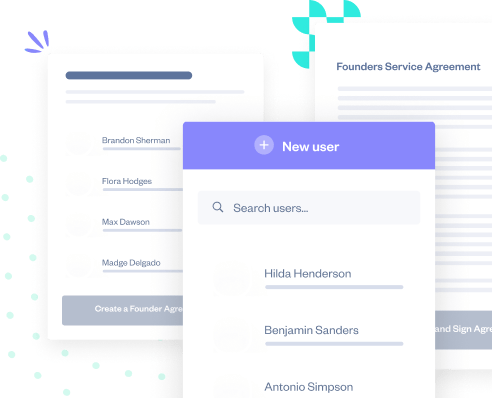
Related posts
How to find startup investors.
How to find startup investors… one of the most common questions we get asked at SeedLegals. So, here’s the c...
Jonny Seaman
How to create a pitch deck: top tips from an expert pitch coach.
A good pitch deck gets you out of the inbox and into investor meetings. Find out the slides you need and learn how to te...
Kirsty MacSween
More ways to personalise your pitch.
Since we launched SeedLegals Pitch in November 2021, thousands of founders have created a Pitch page. Here are the updat...
Suzanne Worthington
Start your journey with us.

How to Write a 5-Year Business Plan: A Guide to Creating a Good Business Future

Learning how to write an effective five-year business plan helps you manage, and optimize your business operations for the better.

Jenna Bunnell
Jenna Bunnell is the Senior Manager for Content Marketing at Dialpad, an AI-incorporated cloud-hosted multi line phone system for small business that provides valuable call details for business owners and sales representatives.
To run and grow a successful business, planning is crucial.
A typical business plan covers the next one to three years and details your target audience, marketing strategy, and products or services for that time period. A five-year business plan expands on this premise, and predicts what your business might do in the next five years.
Learning how to write an effective five-year business plan helps you manage, and optimize your business operations for the better. Without a firm business plan, you risk straying from your intended course.
Establishing a long-term plan determines your business’s priorities and aspirations, including several important milestones. A long-term business ensures you are improving business time management skills.
To get cracking with developing your ideal five-year business plan, follow this simple guide to success.
Why Create a 5-Year Business Plan?
Suppose you implement a robust five-year business plan at some point in your business’s lifetime. In that case, it will provide valuable insight into how your business is likely to fare over the coming years.
In addition to long-term business insights, your business plan helps with:
An important part of your business plan is thorough market research, and measuring what your competitors are doing. Conducting this analysis allows you to make strategic decisions about moving your business forward.
Strategic Planning
The creation of your five-year business plan solidifies the ideas you have for your business, and what you need in place to see those ideas come to fruition.
Partnerships
If you can envision future collaboration opportunities, your five-year business plan is a great resource for other companies to learn about your business, and decide if they want to go into partnership with you.
A strategic five-year business plan helps you encourage data-driven business growth in the long-term, and assists with decisions about the company’s future. Businesses that create long-term business plans are good at strategic thinking and prepared for potential obstacles their companies may face.
What Should a 5-Year Business Plan Include?
A traditional five-year business plan should include business strategies, financial projections, competitive analysis, SWOT analysis, and future roadmaps. In essence, your five-year business plan should detail your business's direction, what you think your industry will look like in five years, trend predictions, and how your business will solve your target audience’s problems.
Your five-year business plan will probably include the following aspects; however, it may vary slightly from this outline:
- Executive Summary. A brief description of your business, and its goals.
- Business Description. Where does your business operate, and what does it do?
- Management Team. The people who run your business.
- Products and Services. A description of your business’s offerings.
- SWOT Analysis. Analysis of strengths, weaknesses, opportunities, and threats concerning your business.
- Target Audience. Who buys from your business, and are there potential new audiences you want to reach?
- Competitive Analysis. Who are your competitors, and how does your business compare to them?
- Market Analysis. How does your business meet the needs of its customers?
- Marketing and Sales Plan. Plans for brand awareness, and increasing sales.
- Financials. Profit and loss statements, and future financial projections.
- Conclusion. An overall summary of your five-year business plan.
How to Write a 5-Year Business Plan
Let’s look at the outline above in detail, to uncover what to include in each section.
Executive Summary
Write your executive summary with your business’s overview, and mission statement. Concise mission statements that reflect your business’s goals and objectives are ideal, such as these from famous brands:
“To connect the world’s professionals to make them more productive, and successful.” LinkedIn “To help people worldwide plan and have the perfect trip.” Trip Advisor
Consider writing your business’s executive summary after completing the other sections, as this element of your plan should be a complete rundown of your business.
Business Description
This section contains all the essential information about your business, including your goals, target customers, business structure, and future restructuring plans to align with objectives. Consider why your business exists, your hopes for your business’s future, and its values to fill out this section.
Management Team
Include a brief description of your management team’s job responsibilities, skills, and how they fit into your business. Your team can act as your business’s USP, especially if they bring unique talents to the table.
Products and Services
A detailed description of your business’s products and services, including benefits, features, and supplier information if relevant. List potential new services or products in the early planning stages, how much revenue you plan to make from them, and how they will serve your target audience.
SWOT Analysis
Focus on your business’s strengths, weaknesses, opportunities, and potential threats. For example, strengths may include your business’s exemplary customer service. A weakness might be that you need to optimize resource scheduling . Opportunities are areas your business can explore to scale up, and threats can include opposition problems or changes in your industry.
Target Audience
Describe your current target audience, and any potential new audiences your business plans to expand to reach. Segment your customers into demographics, behavior patterns, values, and level of education if appropriate to your business. Doing this helps readers of your five-year business plan further understand how your business plans to grow.
Competitive Analysis
Your business plan should include information about who your competitors are, and, where your business sits compared to them. For example, SaaS businesses would conduct cloud call center software comparison research to understand the competitive landscape. Finish off with details about your competitors’ strengths, and weaknesses in this section. Competitive analysis helps you understand areas your business can win over your competitors. If their social media platforms show that their overall customer service is underperforming, you can make strides to elevate your customer service efforts, and overtake them in this area.
Market Analysis
Research your market and write your findings, incorporating statistics, and relevant data. This area of your business plan should focus on where your business is positioned currently in the market, and your predictions for future market changes regarding your business’s strategies. Think about how big the current market is for your products or services, and this should create ideas for future product developments.
Marketing and Sales Plan
You need an overall plan for marketing your business’s offerings to your target audience. Include information about digital marketing plans, and opportunities to increase your brand’s reach. If you plan to explore the benefits of local phone numbers to level up your sales team’s capabilities, add this information as part of your marketing plan.
Include details about your sales strategy, involving future staff required to meet your business’s goals. Information about sales targets is helpful in this section of your business plan.
Financials
Prepare a financial report demonstrating your business’s financial projections over the next five years. Your report must include anticipated revenue based on market, and competitor research.
Conclusion
Illustrate the key points within your five-year business plan in a neat summary. This section should reassure potential investors that your business is viable, and has solid plans for growth.
Develop Long-term Growth Targets
While creating your five-year business plan, always have in mind where you envision your business in five years.
When writing your long-term business plan, the following questions are helpful:
- How many customers do you predict to gain in the next five years?
- What do you need to put in place to achieve that customer number?
- Do you need to consider shopify alternatives ?
- How much does your business need to earn in year three to be on track?
- Do you need to hire new staff members? If so, how many?
- Will you change your business location?
- Will you need to open up different locations for your business operations?
- Will you introduce new products or services?
Consider setting milestones for the course of your five-year business plan, as this approach is often easier to manage.
Say your business plans to dabble in the affiliate marketing world. Investigate drop shipping vs affiliate marketing approaches to ascertain which marketing method is most beneficial for your business. Then set a milestone to join a set number of affiliate marketing programs by a specific date, review your results, and move upwards from there.
Making a Good Business Future
Your five-year business plan will require amendments over time. And that’s perfectly normal. As your business grows and changes, you’ll learn new things about your business’s industry, and need to alter your roadmap accordingly.
An effective five-year business plan serves to convince investors that your business is worth investing in. It also ensures that your business moves in the right, and planned direction.
By creating a five-year business plan now, your business stands the best chance of success for the next five years, and the future.

About the author
Jenna Bunnell is the Senior Manager for Content Marketing at Dialpad, an AI-incorporated cloud-hosted multi line phone system for small business that provides valuable call details for business owners and sales representatives. She is driven and passionate about communicating a brand’s design sensibility and visualizing how content can be presented in creative and comprehensive ways. Jenna Bunnell also published articles for domains such as Attention Insight and Traffit . Check out her LinkedIn profile.
Related articles

How to Write a 5-Year Business Plan
- Small Business
- Business Planning & Strategy
- Help in Writing a Business Plan
- ')" data-event="social share" data-info="Pinterest" aria-label="Share on Pinterest">
- ')" data-event="social share" data-info="Reddit" aria-label="Share on Reddit">
- ')" data-event="social share" data-info="Flipboard" aria-label="Share on Flipboard">
How to Rotate a Slide in PowerPoint
6 types of business plans, effective communication skills used in public relations & marketing.
- How to Create Effective Business Plans
- How to Write a 3-Year Business Forecast
A 5-year business plan will help you manage your company and seek loans or investment money. This term is familiar to most commercial loan officers and small business investors. Learning how to write an effective five year business plan helps you manage better and improves your chances of receiving the loans or investment dollars you need to succeed.
You should thoroughly understand business plan components and your company to complete a winning blueprint for success. Below are several points to consider when writing an effective 5-year business plan.
Design Your Strategic Plan
Design your strategic plan. Combine your goals with your vision for your company. Decide on the best strategies – e-commerce, retail locations, business-to-business, business-to-consumers or combinations thereof – to reach your business objectives. These will be the benchmarks for your five-year business plan
Prepare an Executive Summary
Prepare an executive summary. This section outlines your goals, objectives, strategies and your expertise in achieving the results you project. When seeking loans or investment, this is the most critical section of your business plan. You have limited time to impress a loan officer or investor, both of whom read many business plans daily. Make it brief, "hard hitting" and highly focused on achievement.
Introduce Your Management Team
Display the talent of your management team. Like a resume – only more interesting – management team biographies increase the credibility of your executive summary and all projections that follow. If you are a one-person management team, be sure to emphasize all your skills.
For example, if you are strong in technology and accounting, be sure to mention your marketing, customer relations and operations skills. If you're going to "outsource" these functions, explain how you plan to use other experts and whom you're considering.
Describe Products or Services
Describe the products or services you offer, in detail. In a five-year business plan, you should convince the reader that your products/services are marketable now and will continue to be popular in the coming years. Clearly state sound reasons that your products are currently viable and how you will react to future challenges in the market.
Create Financial Projections
Create financial projections for the next five years. Include income statements, balance sheets, and cash flow estimates. For years one and two, show Income and cash flow Statements on a monthly basis. You can use quarterly projections for years three through five. If your starting a small business, you can estimate your balance sheet on a semi-annual basis because you probably expect few major changes.
Things You Will Need
Valid business idea
Popular product or service
Calculator or PC
Accounting statement knowledge
Write a detailed "narrative" to explain and support your financial projections. Keep your plan thorough, but clear. Exotic, colorful graphs or other additions are unnecessary in most cases. Anticipate and prepare answers for questions that may come from readers. Spend more time researching and studying your market than writing the plan.
Don't fill your plan with unnecessary or subjective text or numbers. Readers want you to stay "on point" and focused. Never exaggerate or dramatically overestimate financial results. Your plan quickly loses credibility.
- Planware.org: Characteristics of Business Plans
- Forbes: trategic Plan Template: What To Include In Yours
- Stirling.gov.uk: Stirling Council Five-year Business Plan
- Business Plan Checklist
- Write a detailed "narrative" to explain and support your financial projections.
- Keep your plan thorough, but clear. Exotic, colorful graphs or other additions are unnecessary in most cases.
- Anticipate and prepare answers for questions that may come from readers.
- Spend more time researching and studying your market than writing the plan.
- Don't fill your plan with unnecessary or subjective text or numbers. Readers want you to stay "on point" and focused.
- Never exaggerate or dramatically overestimate financial results. Your plan quickly loses credibility.
Related Articles
How to write the perfect business plan, example of a business plan for a small business, how to project sales numbers, how to plan daily work activities for leadership, how to write a resume for a business loan, the definition of forecasting skills, what content is included in the finance section of a marketing plan, how to make a business plan presentation, examples for a business proposal presentation, most popular.
- 1 How to Write the Perfect Business Plan
- 2 Example of a Business Plan for a Small Business
- 3 How to Project Sales Numbers
- 4 How to Plan Daily Work Activities for Leadership
SMALL BUSINESS MONTH. 50% Off for 6 Months. BUY NOW & SAVE
50% Off for 6 Months Buy Now & Save
Wow clients with professional invoices that take seconds to create
Quick and easy online, recurring, and invoice-free payment options
Automated, to accurately track time and easily log billable hours
Reports and tools to track money in and out, so you know where you stand
Easily log expenses and receipts to ensure your books are always tax-time ready
Tax time and business health reports keep you informed and tax-time ready
Automatically track your mileage and never miss a mileage deduction again
Time-saving all-in-one bookkeeping that your business can count on
Track project status and collaborate with clients and team members
Organized and professional, helping you stand out and win new clients
Set clear expectations with clients and organize your plans for each project
Client management made easy, with client info all in one place
Pay your employees and keep accurate books with Payroll software integrations
- Team Management
FreshBooks integrates with over 100 partners to help you simplify your workflows
Send invoices, track time, manage payments, and more…from anywhere.
- Freelancers
- Self-Employed Professionals
- Businesses With Employees
- Businesses With Contractors
- Marketing & Agencies
- Construction & Trades
- IT & Technology
- Business & Prof. Services
- Accounting Partner Program
- Collaborative Accounting™
- Accountant Hub
- Reports Library
- FreshBooks vs QuickBooks
- FreshBooks vs HoneyBook
- FreshBooks vs Harvest
- FreshBooks vs Wave
- FreshBooks vs Xero
- Free Invoice Generator
- Invoice Templates
- Accounting Templates
- Business Name Generator
- Estimate Templates
- Help Center
- Business Loan Calculator
- Mark Up Calculator
Call Toll Free: 1.866.303.6061
1-888-674-3175
- All Articles
- Productivity
- Project Management
- Bookkeeping
Resources for Your Growing Business
How to make financial projections for business.

Writing a solid business plan should be the first step for any business owner looking to create a successful business.
As a small business owner, you will want to get the attention of investors, partners, or potential highly skilled employees. It is, therefore, important to have a realistic financial forecast incorporated into your business plan.
We’ll break down a financial projection and how to utilize it to give your business the best start possible.
Key Takeaways
Accurate financial projections are essential for businesses to succeed. In this article, we’ll explain everything you need to know about creating financial projections for your business. Here’s what you need to know about financial projections:
- A financial projection is a group of financial statements that are used to forecast future performance
- Creating financial projections can break down into 5 simple steps: sales projections, expense projections, balance sheet projections, income statement projections, and cash flow projections
- Financial projections can offer huge benefits to your business, including helping with forecasting future performance, ensuring steady cash flow, and planning key moves around the growth of the business
Here’s What We’ll Cover:
What Is a Financial Projection?
How to Create a Financial Projection
What goes into a financial projection, what are financial projections used for.
Financial Projections Advantages
Frequently Asked Questions
What Is Financial Projection?
A financial projection is essentially a set of financial statements . These statements will forecast future revenues and expenses.
Any projection includes your cash inflows and outlays, your general income, and your balance sheet.
They are perfect for showing bankers and investors how you plan to repay business loans. They also show what you intend to do with your money and how you expect your business to grow.
Most projections are for the first 3-5 years of business, but some include a 10-year forecast too.
Either way, you will need to develop a short and mid-term projection broken down month by month.
As you are just starting out with your business, you won’t be expected to provide exact details. Most financial projections are rough guesses. But they should also be educated guesses based on market trends, research, and looking at similar businesses.
It’s incredibly important for financial statements to be realistic. Most investors will be able to spot a fanciful projection from a mile away.
In general, most people would prefer to be given realistic projections, even if they’re not as impressive.

Financial projections are created to help business owners gain insight into the future of their company’s financials.
The question is, how to create financial projections? For business plan purposes, it’s important that you follow the best practices of financial projection closely. This will ensure you get accurate insight, which is vital for existing businesses and new business startups alike.
Here are the steps for creating accurate financial projections for your business.
1. Start With A Sales Projection
For starters, you’ll need to project how much your business will make in sales. If you’re creating a sales forecast for an existing business, you’ll have past performance records to project your next period. Past data can provide useful information for your financial projection, such as if your sales do better in one season than another.
Be sure also to consider external factors, such as the economy at large, the potential for added tariffs and taxes in the future, supply chain issues, or industry downturns.
The process is almost the same for new businesses, only without past data to refer to. Business startups will need to do more research on their industry to gain insight into potential future sales.
2. Create Your Expense Projection
Next, create an expense projection for your business. In a sense, this is an easier task than a sales projection since it seems simpler to predict your own behaviors than your customers. However, it’s vital that you expect the unexpected.
Optimism is great, but the worst-case scenario must be considered and accounted for in your expense projection. From accidents in the workplace to natural disasters, rising trade prices, to unexpected supply disruptions, you need to consider these large expenses in your projection.
Something always comes up, so we suggest you add a 10-15% margin on your expense projection.

3. Create Your Balance Sheet Projection
A balance sheet projection is used to get a clear look at your business’s financial position related to assets, liabilities , and equity, giving you a more holistic view of the company’s overall financial health.
For startup businesses, this can prove to be a lot of work since you won’t have existing records of past performance to pull from. This will need to be factored into your industry research to create an accurate financial projection.
For existing businesses, it will be more straightforward. Use your past and current balance sheets to predict your business’s position in the next 1-3 years. If you use a cloud-based, online accounting software with the feature to generate balance sheets, such as the one offered by FreshBooks, you’ll be able to quickly create balance sheets for your financial projection within the app.
Click here to learn more about the features of FreshBooks accounting software.
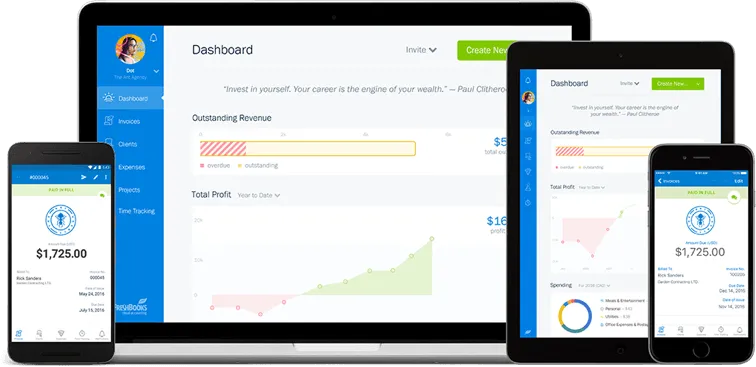
4. Make Your Income Statement Projection
Next up, create an income statement projection. An income statement is used to declare the net income of a business after all expenses have been made. In other words, it states the profits of a business.
For currently operating businesses, you can use your past income statements and the changes between them to create accurate predictions for the next 1-3 years. You can also use accounting software to generate your income statements automatically.
You’ll need to work on rough estimates for new businesses or those still in the planning phase. It’s vital that you stay realistic and do your utmost to create an accurate, good-faith projection of future income.
5. Finally, Create Your Cash Flow Projection
Last but not least is to generate your projected cash flow statement. A cash flow projection forecasts the movement of all money to and from your business. It’s intertwined with a business’s balance sheet and income statement, which is no different when creating projections.
If your business has been operating for six months or more, you can create a fairly accurate cash flow projection with your past cash flow financial statements. For new businesses, you’ll need to factor in this step of creating a financial forecast when doing your industry research.
It needs to include five elements to ensure an accurate, useful financial forecast for your business. These financial statements come together to provide greater insight into the projected future of a business’s financial health. These include:
Income Statement
A standard income statement summarizes your company’s revenues and expenses over a period. This is normally done either quarterly or annually.
The income statement is where you will do the bulk of your forecasting.
On any income statement, you’re likely to find the following:
- Revenue: Your revenue earned through sales.
- Expenses: The amount you’ve spent, including your product costs and your overheads.
- Pre-Tax Earnings: This is your income before you’ve paid tax.
- Net Income: The total revenues minus your total expenses.
Net income is the most important number. If the number is positive, then you’re earning a profit, if it’s negative, it means your expenses outweigh your revenue and you’re making a loss.
Cash Flow Statement
Your cash flow statement will show any potential investor whether you are a good credit risk. It also shows them if you can successfully repay any loans you are granted.
You can break a cash flow statement into three parts:
- Cash Revenues: An overview of your calculated cash sales for a given time period.
- Cash Disbursements: You list all the cash expenditures you expect to pay.
- Net Cash Revenue: Take the cash revenues minus your cash disbursements.
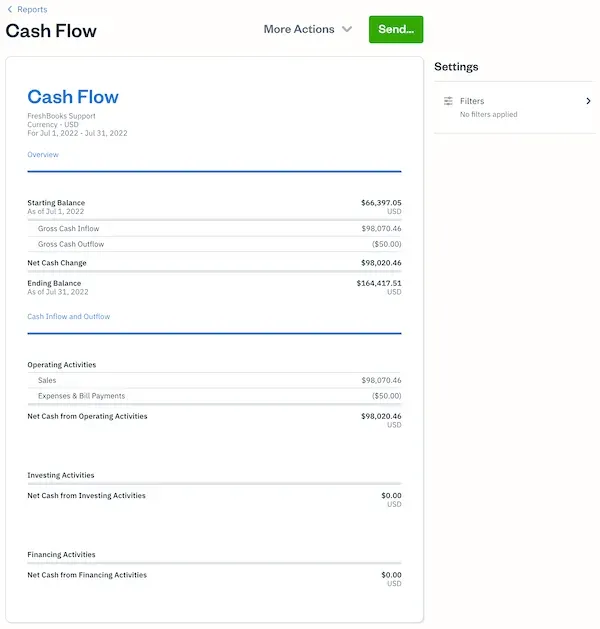
Balance Sheet
Your balance sheet will show your business’s net worth at a given time.
A balance sheet is split up into three different sections:
- Assets: An asset is a tangible object of value that your company owns. It could be things like stock or property such as warehouses or offices.
- Liabilities: These are any debts your business owes.
- Equity: Your equity is the summary of your assets minus your liabilities.

Looking for an easy-to-use yet capable online accounting software? FreshBooks accounting software is a cloud-based solution that makes financial projections simple. With countless financial reporting features and detailed guides on creating accurate financial forecasts, FreshBooks can help you gain the insight you need to let your business thrive. Click here to give FreshBooks a try for free.
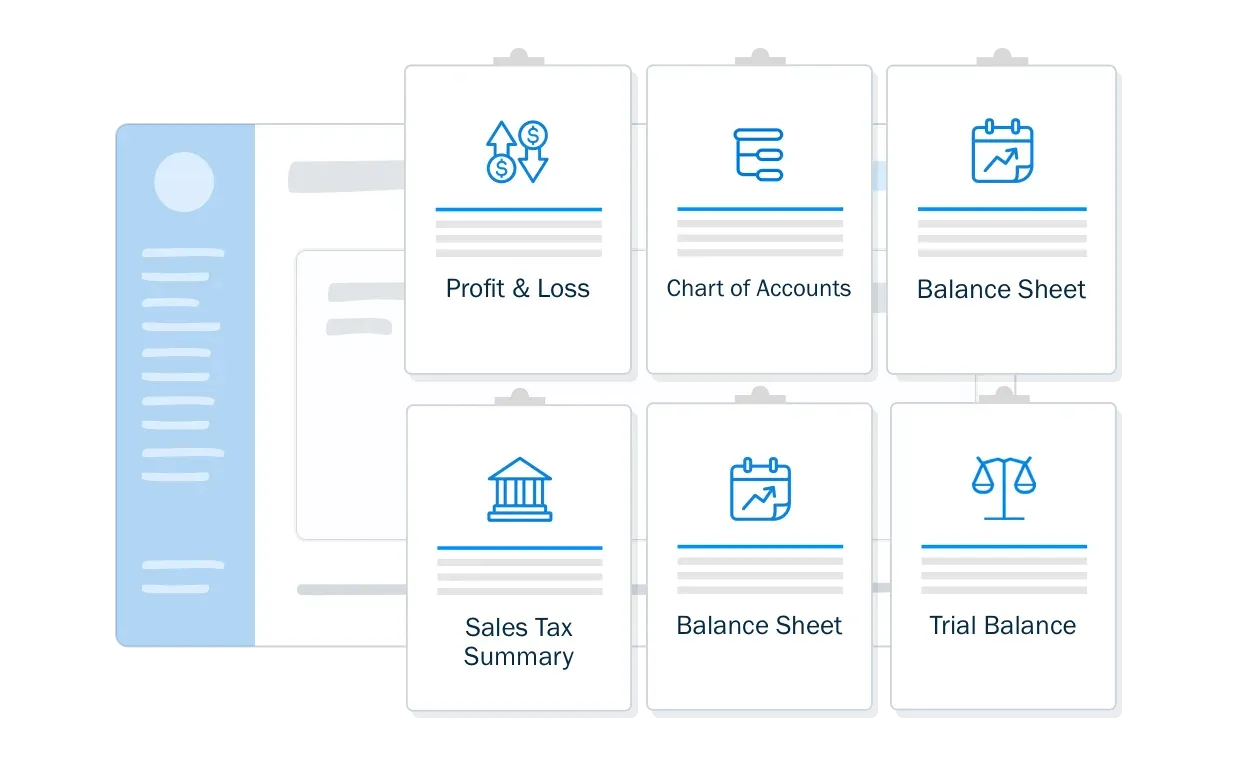
Financial projections have many uses for current business owners and startup entrepreneurs. Provided your financial forecasting follows the best practices for an accurate projection, your data will be used for:
- Internal planning and budgeting – Your finances will be the main factor in whether or not you’ll be able to execute your business plan to completion. Financial projections allow you to make it happen.
- Attracting investors and securing funding – Whether you’re receiving financing from bank loans, investors, or both, an accurate projection will be essential in receiving the funds you need.
- Evaluating business performance and identifying areas for improvement – Financial projections help you keep track of your business’s financial health, allowing you to plan ahead and avoid unwelcome surprises.
- Making strategic business decisions – Timing is important in business, especially when it comes to major expenditures (new product rollouts, large-scale marketing, expansion, etc.). Financial projections allow you to make an informed strategy for these big decisions.
Financial Projections Advantages
Creating clear financial projections for your business startup or existing company has countless benefits. Focusing on creating (and maintaining) good financial forecasting for your business will:
- Help you make vital financial decisions for the business in the future
- Help you plan and strategize for growth and expansion
- Demonstrate to bankers how you will repay your loans
- Demonstrate to investors how you will repay financing
- Identify your most essential financing needs in the future
- Assist in fine-tuning your pricing
- Be helpful when strategizing your production plan
- Be a useful tool for planning your major expenditures strategically
- Help you keep an eye on your cash flow for the future

Your financial forecast is an essential part of your business plan, whether you’re still in the early startup phases or already running an established business. However, it’s vital that you follow the best practices laid out above to ensure you receive the full benefits of comprehensive financial forecasting.
If you’re looking for a useful tool to save time on the administrative tasks of financial forecasting, FreshBooks can help. With the ability to instantly generate the reports you need and get a birds-eye-view of your business’s past performance and overall financial help, it will be easier to create useful financial projections that provide insight into your financial future.
FAQs on Financial Projections
More questions about financial forecasting, projections, and how these processes fit into your business plan? Here are some frequently asked questions by business owners.
Why are financial projections important?
Financial projections allow you to gain insight into your business’s economic trajectory. This helps business owners make financial decisions, secure funding, and more. Additionally, financial projections provide early warning of roadblocks and challenges that may lay ahead for the company, making it easier to plan for a clear course of action.
What is an example of a financial projection?
A projection is an overall look at a business’s forecasted performance. It’s made up of several different statements and reports, such as a cash flow statement, income statement, profit and loss statement, and sales statement. You can find free templates and examples of many of these reports via FreshBooks. Click here to view our selection of accounting templates.
Are financial forecasts and financial projections the same?
Technically, there is a difference between forecasting and projections, though many use the terms interchangeably. Financial forecasting often refers to shorter-term (<1 year) predictions of financial performance, while financial projections usually focus on a larger time scale (2-3 years).
What is the most widely used method for financial forecasting?
The most common method of accurate forecasting is the straight-line forecasting method. It’s most often used for projecting the growth of a business’s revenue growth over a set period. If you notice that your records indicate a 4% growth of revenue per year for five years running, it would be reasonable to assume that this will continue year-over-year.
What is the purpose of a financial projection?
Projection aims to get deeper, more nuanced insight into a business’s financial health and viability. It allows business owners to anticipate expenses and profit growth, giving them the tools to secure funding and loans and strategize major business decisions. It’s an essential accounting process that all business owners should prioritize in their business plans.

Michelle Alexander, CPA
About the author
Michelle Alexander is a CPA and implementation consultant for Artificial Intelligence-powered financial risk discovery technology. She has a Master's of Professional Accounting from the University of Saskatchewan, and has worked in external audit compliance and various finance roles for Government and Big 4. In her spare time you’ll find her traveling the world, shopping for antique jewelry, and painting watercolour floral arrangements.
RELATED ARTICLES
Save Time Billing and Get Paid 2x Faster With FreshBooks
Want More Helpful Articles About Running a Business?
Get more great content in your Inbox.
By subscribing, you agree to receive communications from FreshBooks and acknowledge and agree to FreshBook’s Privacy Policy . You can unsubscribe at any time by contacting us at [email protected].
👋 Welcome to FreshBooks
To see our product designed specifically for your country, please visit the United States site.
Plan Projections
ideas to numbers .. simple financial projections
Home > Financial Projection Online Calculator
Financial Projection Online Calculator
This 3 year financial projection calculator is a free online tool. The calculator produces income statements, balance sheets, and cash flow statements for the next 3 years, and provides a quick and easy way to test the outline feasibility of your business idea.
Simply enter the amounts in the highlighted input cells and hit the 'Calculate' button. All amounts entered will be rounded to the nearest integer.
The contents of this calculator will be lost if you reload the page or press the reset button.
3 Year Financial Projections

How to Create Financial Projections for Your Business Plan
Written by Dave Lavinsky
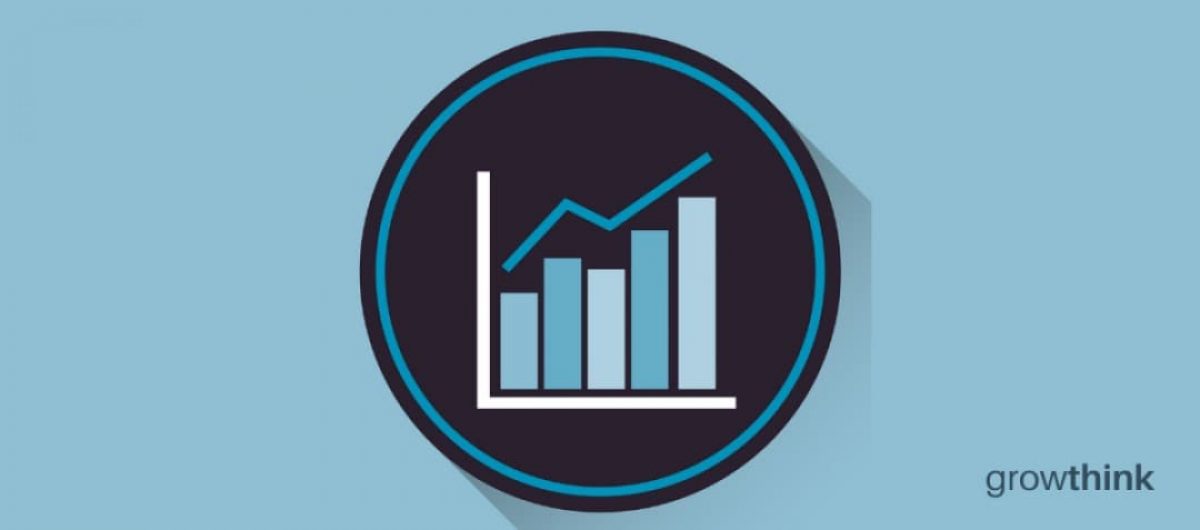
Financial projections, also known as financial models, are forecasts of your company’s expected financial performance, typically over the next 5 years.
Over the past 25+ years, we’ve created financial projections for thousands of startups and existing businesses. In doing so, we’ve found 3 key reasons why financial projections are important:
- They help you determine the viability of your new business ideas and/or your need to make modifications to them. For instance, if your initial financial projections show your business idea isn’t profitable, you’ll know that changes are needed (e.g., raising prices, serving new markets, figuring out how to reduce costs, etc.) to make it viable.
- They are crucial for raising funding. Lenders will always review your financial projections to ensure you can comfortably repay any loans they issue you. Equity investors will nearly always review your projections in determining whether they can achieve their desired return on their investment in your business.
- They help keep your business financially on track by giving you goals. For instance, if your financial projections state your company should generate 100 new clients this year, and the year is halfway done and you’re only at 30 clients, you’ll know you need to readjust your strategy to achieve your goals.
In the remainder of this article, you’ll learn more about financial projections, how to complete them, and how to incorporate them in your business plan.
Download our Ultimate Business Plan Template Here to Quickly & Easily Complete Your Business Plan & Financial Projections
What are Financial Projections?
Financial projections are forecasts or estimations of your company’s future revenues and expenses, serving as a crucial part of business planning. To complete them you must develop multiple assumptions with regards to items like future sales volumes, employee headcount and the cost of supplies and other expenses. Financial projections help you create better strategies to grow your business.
Your financial projections will be the most analyzed part of your business plan by investors and/or banks. While never a precise prediction of future performance, an excellent financial model outlines the core assumptions of your business and helps you and others evaluate capital requirements, risks involved, and rewards that successful execution will deliver.
Having a solid framework in place also will help you compare your performance to the financial projections and evaluate how your business is progressing. If your performance is behind your projections, you will have a framework in place to assess the effects of lowering costs, increasing prices, or even reimagining your model. In the happy case that you exceed your business projections, you can use your framework to plan for accelerated growth, new hires, or additional expansion investments.
Hence, the use of financial projections is multi-fold and crucial for the success of any business. Your financial projections should include three core financial statements – the income statement, the cash flow statement, and the balance sheet. The following section explains each statement in detail.
Necessary Financial Statements
The three financial statements are the income statement, the cash flow statement, and the balance sheet. You will learn how to create each one in detail below.
Income Statement Projection
The projected income statement is also referred to as a profit and loss statement and showcases your business’s revenues and expenses for a specific period.
To create an income statement, you first will need to chart out a sales forecast by taking realistic estimates of units sold and multiplying them by price per unit to arrive at a total sales number. Then, estimate the cost of these units and multiply them by the number of units to get the cost of sales. Finally, calculate your gross margin by subtracting the cost of sales from your sales.
Once you have calculated your gross margin, deduct items like wages, rent, marketing costs, and other expenses that you plan to pay to facilitate your business’s operations. The resulting total represents your projected operating income, which is a critical business metric.
Plan to create an income statement monthly until your projected break-even, or the point at which future revenues outpace total expenses, and you reflect operating profit. From there, annual income statements will suffice.
Sample Income Statement
Consider a sample income statement for a retail store below:
Cash Flow Projection
As the name indicates, a cash flow statement shows the cash flowing in and out of your business. The cash flow statement incorporates cash from business operations and includes cash inflows and outflows from investment and financing activities to deliver a holistic cash picture of your company.
Investment activities include purchasing land or equipment or research & development activities that aren’t necessarily part of daily operations. Cash movements due to financing activities include cash flowing in a business through investors and/or banks and cash flowing out due to debt repayment or distributions made to shareholders.
You should total all these three components of a cash flow projection for any specified period to arrive at a total ending cash balance. Constructing solid cash flow projections will ensure you anticipate capital needs to carry the business to a place of sustainable operations.
Sample Cash Flow Statement
Below is a simple cash flow statement for the same retail store:
Balance Sheet Projection
A balance sheet shows your company’s assets, liabilities, and owner’s equity for a certain period and provides a snapshot in time of your business performance. Assets include things of value that the business owns, such as inventory, capital, and land. Liabilities, on the other hand, are legally bound commitments like payables for goods or services rendered and debt. Finally, owner’s equity refers to the amount that is remaining once liabilities are paid off. Assets must total – or balance – liabilities and equity.
Your startup financial documents should include annual balance sheets that show the changing balance of assets, liabilities, and equity as the business progresses. Ideally, that progression shows a reduction in liabilities and an increase in equity over time.
While constructing these varied business projections, remember to be flexible. You likely will need to go back and forth between the different financial statements since working on one will necessitate changes to the others.
Sample Balance Sheet
Below is a simple balance sheet for the retail store:
How to Finish Your Business Plan and Financial Projections in 1 Day!
Don’t you wish there was a faster, easier way to finish your plan and financial projections?
With Growthink’s Ultimate Business Plan Template you can finish your plan in just 8 hours or less!
How to Create Financial Projections
When it comes to financial forecasting, simplicity is key. Your financial projections do not have to be overly sophisticated and complicated to impress, and convoluted projections likely will have the opposite effect on potential investors. Keep your tables and graphs simple and fill them with credible data that inspires confidence in your plan and vision. The below tips will help bolster your financial projections.
Create a List of Assumptions
Your financial projections should be tied to a list of assumptions. For example, one assumption will be the initial monthly cash sales you achieve. Another assumption will be your monthly growth rate. As you can imagine, changing either of these assumptions will significantly impact your financial projections.
As a result, tie your income statement, balance sheet, and cash flow statements to your assumptions. That way, if you change your assumptions, all of your financial projections automatically update.
Below are the key assumptions to include in your financial model:
For EACH essential product or service you offer:
- What is the number of units you expect to sell each month?
- What is your expected monthly sales growth rate?
- What is the average price that you will charge per product or service unit sold?
- How much do you expect to raise your prices each year?
- How much does it cost you to produce or deliver each unit sold?
- How much (if at all) do you expect your direct product costs to grow each year?
For EACH subscription/membership, you offer:
- What is the monthly/quarterly/annual price of your membership?
- How many members do you have now, or how many members do you expect to gain in the first month/quarter/year?
- What is your projected monthly/quarterly/annual growth rate in the number of members?
- What is your projected monthly/quarterly/annual member churn (the percentage of members that will cancel each month/quarter/year)?
- What is the average monthly/quarterly/annual direct cost to serve each member (if applicable)?
Cost Assumptions
- What is your monthly salary? What is the annual growth rate in your salary?
- What is your monthly salary for the rest of your team? What is the expected annual growth rate in your team’s salaries?
- What is your initial monthly marketing expense? What is the expected annual growth rate in your marketing expense?
- What is your initial monthly rent + utility expense? What is the expected annual growth rate in your rent + utility expense?
- What is your initial monthly insurance expense? What is the expected annual growth rate in your insurance expense?
- What is your initial monthly office supplies expense? What is the expected annual growth rate in your office supplies expense?
- What is your initial monthly cost for “other” expenses? What is the expected annual growth rate in your “other” expenses?
Capital Expenditures, Funding, Tax, and Balance Sheet Items
- How much money do you need for Capital Expenditures in your first year (to buy computers, desks, equipment, space build-out, etc.)?
- How much other funding do you need right now?
- What percent of the funding will be financed by Debt (versus equity)?
- What Corporate Tax Rate would you like to apply to company profits?
- What is your Current Liabilities Turnover (in the number of days)?
- What are your Current Assets, excluding cash (in the number of days)?
- What is your Depreciation rate?
- What is your Amortization number of Years?
- What is the number of years in which your debt (loan) must be paid back?
- What is your Debt Payback interest rate?
Create Two Financial Projection Scenarios
It would be best if you used your assumptions to create two sets of financial projections that exhibit two very different scenarios. One is your best-case scenario, and the other is your worst-case. Investors are usually very interested in how a business plan will play out in both these scenarios, allowing them to better analyze the robustness and potential profitability of a business.
Conduct a Ratio Analysis
Gain an understanding of average industry financial ratios, including operating ratios, profitability ratios, return on investment ratios, and the like. You can then compare your own estimates with these existing ratios to evaluate costs you may have overlooked or find historical financial data to support your projected performance. This ratio analysis helps ensure your financial projections are neither excessively optimistic nor excessively pessimistic.
Be Realistic
It is easy to get carried away when dealing with estimates and you end up with very optimistic financial projections that will feel untenable to an objective audience. Investors are quick to notice and question inflated figures. Rather than excite investors, such scenarios will compromise your legitimacy.
Create Multi-Year Financial Projections
The first year of your financial projections should be presented on a granular, monthly basis. For subsequent years, annual projections will suffice. It is advised to have three- or five-year projections ready when you start courting investors. Since your plan needs to be succinct, you can add yearly projections as appendices to your main plan.
You should now know how to create financial projections for your business plan. In addition to creating your full projections as their own document, you will need to insert your financial projections into your plan. In your executive summary, Insert your topline projections, that is, just your sales, gross margins, recurring expenses, EBITDA (earnings before interest, taxes, depreciation, and amortization), and net income). In the financial plan section of your plan, insert your key assumptions and a little more detail than your topline projections. Include your full financial model in the appendix of your plan.
Other Helpful Business Plan Articles & Templates

801-804-5800
[email protected]
Five-Year Financial Forecast & Projections: Why They Matter
by Jerry Vance | Feb 24, 2020 | Business Growth , Financial Forecasting , Financial Strategy , General Business
If your company is preparing to raise capital or if you are currently writing a business plan, you may be getting ready to build your 5-year financial forecast. It can be intimidating to plan this far into the future—as well as knowing what kind of projections to make.
However, when used properly, a five-year financial forecast can become a great asset to your business, not only to raise money, but to help you understand and build your business.
Many businesses build a 3- or 5-year forecast when they first write their business plan, but few look at this forecast again after its written. A 5-year forecast is an essential tool not only for new businesses but for growing businesses of all sizes as well.
In this article, we discuss what a 5-year forecast is, why a financial forecast is important, and whether your company needs a financial forecast.
What is a 5 Year Forecast?
A 5-year forecast is an educated projection of your company’s financial performance over the next five years. It specifically details projected revenues, costs, expenses, cash flows (including any projected capital raises), and owner equity, as well as projecting sales growth and margins.
A 5-year forecast is much different from typical accounting and historical financials. Accounting reports past financial performance while a five-year financial forecast predicts future financial performance.
This 5-year forecast is an important document for potential investors who want to see how capital will be used to grow the company and lenders who are analyzing loan risk—but it is also an essential document for management to understand your business and plan for successful growth. A five-year forecast can help educate business decisions (such as hiring, R&D, marketing, capital raises, and more), making it a key tool in strategically growing your business.
Why is a Financial Forecast Important?
A financial forecast is important because it takes the guesswork out of your company’s growth. A well-written financial forecast uses your company’s historical performance, existing assets, market demographics, and industry trends for realistic projections. This means your financial forecast isn’t just a performance meant to impress investors; it is a realistic blueprint for optimal business growth.
- Informs financial decisions. Financial decisions that are made based on a financial forecast are more informed since you have projections for how a given expense will impact the company down the line. This means you have a better basis of judgment to say “yes” or “no” to potential purchases, hires, or shifts of focus in sales or R&D.
- Reduces wasted spend. A financial forecast helps reduce wasted spend since it helps you conscientiously ensure your expenses are driving company growth.
- Helps identify issues. A well-written and well-researched financial forecast becomes a baseline for your business performance. If numbers aren’t hitting your projections, it can be an early indicator of a potential threat or issue, allowing you to more quickly respond and recover.
- Informs hiring decisions. A financial forecast can also help you make important hiring decisions. It will give you a better look at metrics such as customer lifetime value (and whether an additional service rep could reduce customer churn), sales volume (and how much an added sales rep could contribute to revenues),
- Keep a better eye on vendor contracts. Sometimes expenses with vendors can rise without the company taking notice. A financial forecast helps keep track of these relationships and more quickly spot inconsistencies or opportunities for improvement.
- Improves cash flow. More than any other benefit, a financial forecast will help improve cash flow. This is because you can more strategically align expenses with income while reducing wasted spend to ensure your cash reserves never fall too low.
Who Needs a Five-Year Forecast?
Many companies are under the impression a forecast is only necessary when you’re raising capital or if you are writing an initial business plan. However, businesses of all sizes and stages of growth can benefit from a five-year forecast. Not only can a five-year forecast help improve your cash flow and reduce waste, but it also increases your ability to achieve your goals more quickly.
Think of a five-year forecast as a map or blueprint. It guides your company from where you are now to where you want to go. This guide helps to reduce mistakes and streamline your path for improved success.
A five-year forecast should not be written and then stashed away in a filing cabinet; it should become a living document that is revisited monthly or quarterly. At Preferred CFO, the five-year forecasts we create for our clients are updated monthly and become a rolling monthly forecast as well, to give you the most accurate view into the future and to help you grow your business with confidence.
How Can We Help?
Would you like more information about financial forecasting, or would you like to work with one of our outsourced CFOs to design a financial forecast for your company? Reach out, and one of our CFOs will be happy to answer any questions you may have.
About the author
- Leveraging Financial Ratios to Assess Company Performance
Overview Financial ratios are crucial tools for any business or investor looking to assess the financial health of a company. These ratios provide insights into various aspects of a company's operations, such as liquidity, solvency, profitability, and efficiency....
- Exploring Different Financing Options for Business Expansion
Exploring different options for business expansion is essential for companies looking to thrive in today’s dynamic business environment. By expanding their businesses and benchmarking financial performance, entrepreneurs can unlock new opportunities, drive sustainable growth, and achieve their business objectives.
- Why Preferred CFO’s HR Solutions Trump Corporate Giants
In the complex terrain of human resources solutions and payroll management, corporate giants like ADP and Paychex are often the go-to for their seemingly comprehensive solutions that cater to businesses of all sizes. Yet, the reality for many clients is a growing...
- Business Budgeting Essentials
Crafting and implementing an effective business budget is a dynamic and ongoing process. With a strategic and adaptable budget, businesses can enhance financial stability and pave the way for sustainable growth.
Tax Planning Strategy For Small Businesses
Business Tax Planning Strategies:A Small Business Owner's Guide to Savings & Compliance Effective tax planning isn't just about minimizing liabilities; it's about strategically positioning businesses for long-term success. From small enterprises to larger...
Financial Advice for the New Entrepreneur
Profitability is not just a financial metric; it’s a mindset that should permeate your business operations. By prioritizing profitability, you can grow your startup into a financially stable and sustainable business that can weather economic challenges and thrive in the long term.
Guide to HR Outsourcing: Strategies for Modern Business
HR Outsourcing for your business In this dynamic and ever changing business landscape, the questions of "What is HR outsourcing?" and “Do I need a fractional HR team?” have become increasingly relevant. HR outsourcing is a strategic practice that involves delegating...
Managing Business Expenses in Inflationary Times
Inflationary times pose challenges, but with strategic expense management, businesses can navigate these periods successfully. By understanding the impact of inflation, implementing cost-cutting measures, engaging in strategic financial planning, and embracing sustainable practices, businesses can not only weather economic storms but also position themselves for long-term success.
Why You Need Fractional CFO Services in 2024
Why You Need Fractional CFO Services in 2024 In the fast-paced, ever-evolving business environment of 2024, companies across the globe are increasingly recognizing the need for innovative financial management strategies. The US and global economy is in a state of...
20 Things Every Entrepreneur Needs to Know about Accounting
While entrepreneurs don’t need to become professional accountants, having a solid foundation in accounting principles and practices will enable them to make informed financial decisions, communicate effectively with financial professionals, and ensure the financial health and success of their business.
Top Human Resources Strategies for 2024
Welcome to our insightful webinar featuring Tom Applegarth, a renowned expert in the field of Human Resources and our expert Outsourced Human Resources Manager at Preferred CFO. In this webinar, Tom shared with us his valuable strategies and insights for HR success in...
Is it Time to Sell Your Business?
Deciding whether and when to sell your business is a significant and complex decision that should not be undertaken lightly. If the timing is right, the offer is right, and the necessary work is done correctly, selling your business can be highly beneficial. However,...
Stay Connected
- accounting (6)
- Bookkeeping (5)
- Business Growth (38)
- Cash Flow (10)
- Chief Financial Officers (13)
- Construction (1)
- COVID-19 (6)
- Featured (1)
- Finance Knowledge (37)
- Financial Controllers (6)
- Financial Forecasting (12)
- Financial Strategy (79)
- Financial Systems (14)
- Fractional CFO Services (15)
- Fundraising (7)
- General Business (86)
- HR Strategy (5)
- Inventory Strategy (3)
- Labor & Employee Compensation (2)
- Mergers & Acquisitions (3)
- Outsourced Human Resources (5)
- Podcasts (1)
- Raising Capital (6)
- Tech/SaaS (4)
- Uncategorized (119)
Recent Posts
- Maximizing Shareholder Value through Effective Capital Allocation
Quick Links
- Insights & Articles
- Case Studies
- Testimonials
Terms and Conditions
Free Financial Projection and Forecasting Templates
By Andy Marker | January 3, 2024
- Share on Facebook
- Share on LinkedIn
Link copied
We’ve collected the top free financial projection and forecasting templates. These templates enable business owners, CFOs, accountants, and financial analysts to plan future growth, manage cash flow, attract investors, and make informed decisions. On this page, you'll find many helpful, free, customizable financial projection and forecasting templates, including a 1 2-month financial projection template , a startup financial projection template , a 3-year financial projection template , and a small business financial forecast template , among others. You’ll also find details on the elements in a financial projection template , types of financial projection and forecasting templates , and related financial templates .
Simple Financial Projection Template

Download a Sample Simple Financial Projection Template for
Excel | Google Sheets
Download a Blank Simple Financial Projection Template for
Excel | Google Sheets
Small business owners and new entrepreneurs are the ideal users for this simple financial projection template. Just input your expected revenues and expenses. This template stands out due to its ease of use and focus on basic, straightforward financial planning, making it perfect for small-scale or early-stage businesses. Available with or without sample text, this tool offers clear financial oversight, better budget management, and informed decision-making regarding future business growth.
Looking for help with your business plan? Check out these free financial templates for a business plan to streamline the process of organizing your business's financial information and presenting it effectively to stakeholders.
Financial Forecast Template
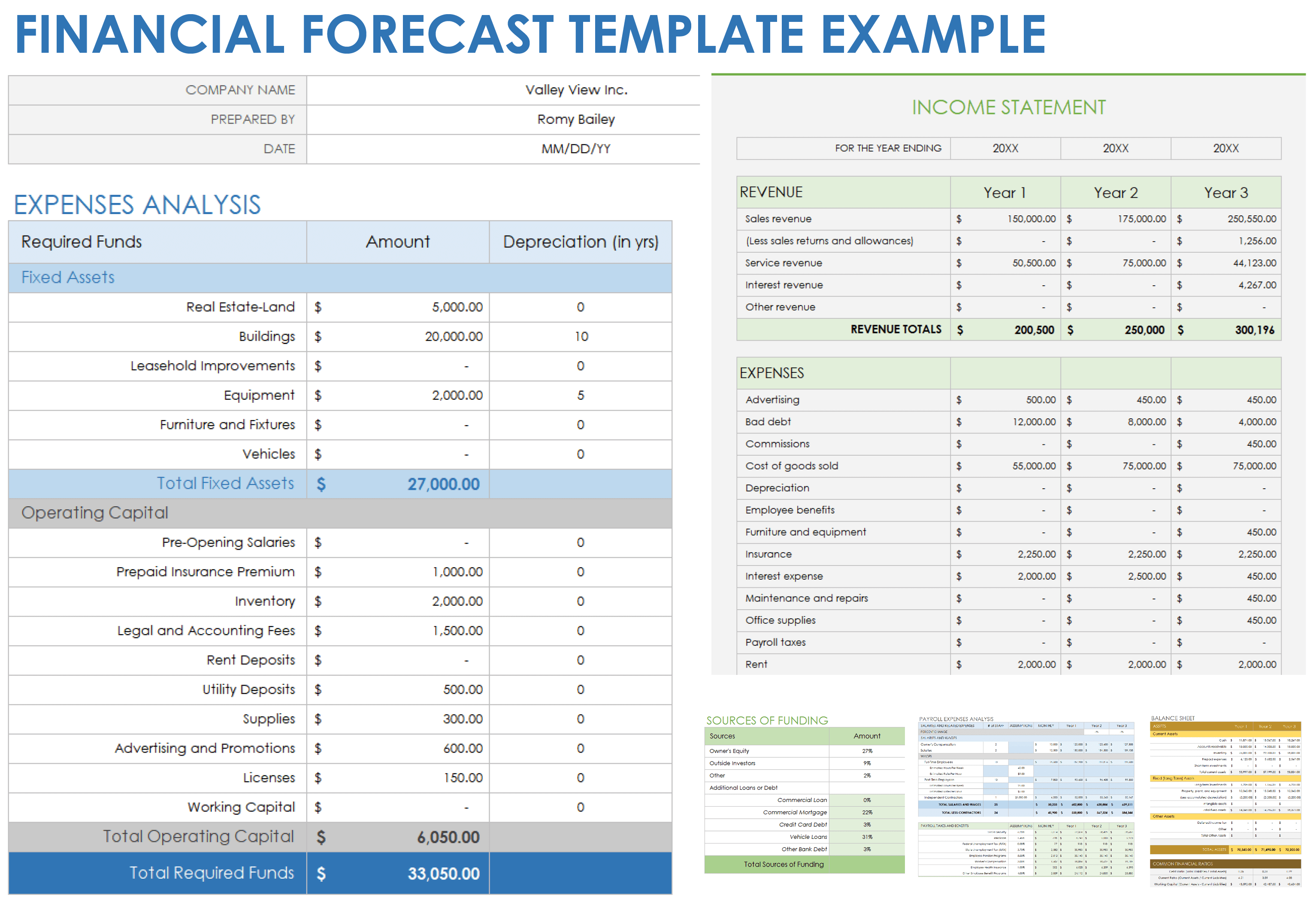
Download a Sample Financial Forecast Template for
Download a Blank Financial Forecast Template for
This template is perfect for businesses that require a detailed and all-encompassing forecast. Users can input various financial data, such as projected revenues, costs, and market trends, to generate a complete financial outlook. Available with or without example text, this template gives you a deeper understanding of your business's financial trajectory, aiding in strategic decision-making and long-term financial stability.
These free cash-flow forecast templates help you predict your business’s future cash inflows and outflows, allowing you to manage liquidity and optimize financial planning.
12-Month Financial Projection Template
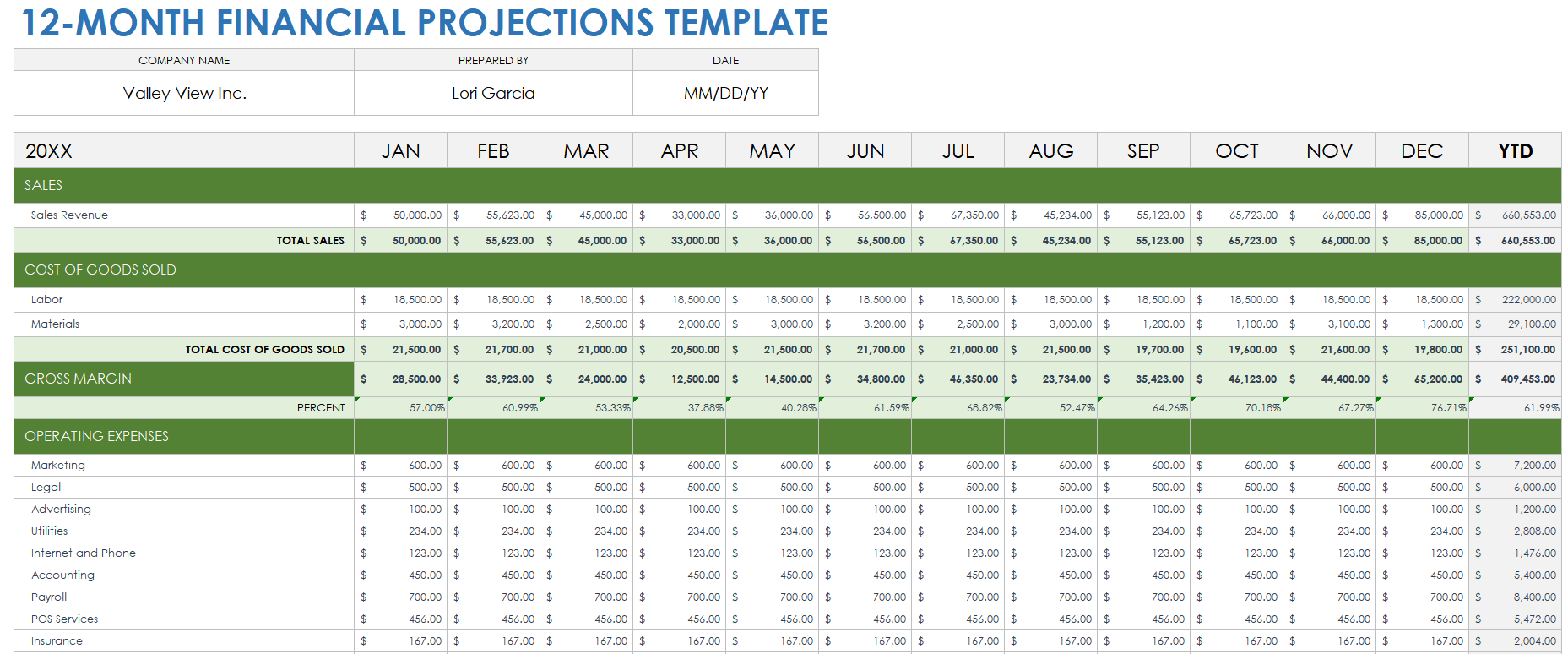
Download a Sample 12-Month Financial Projection Template for
Download a Blank 12-Month Financial Projection Template for
Use this 12-month financial projection template for better cash-flow management, more accurate budgeting, and enhanced readiness for short-term financial challenges and opportunities. Input estimated monthly revenues and expenses, tracking financial performance over the course of a year. Available with or without sample text, this template is ideal for business owners who need to focus on short-term financial planning. This tool allows you to respond quickly to market shifts and plan effectively for the business's crucial first year.
Download free sales forecasting templates to help your business predict future sales, enabling better inventory management, resource planning, and decision-making.
Startup Financial Projection Template
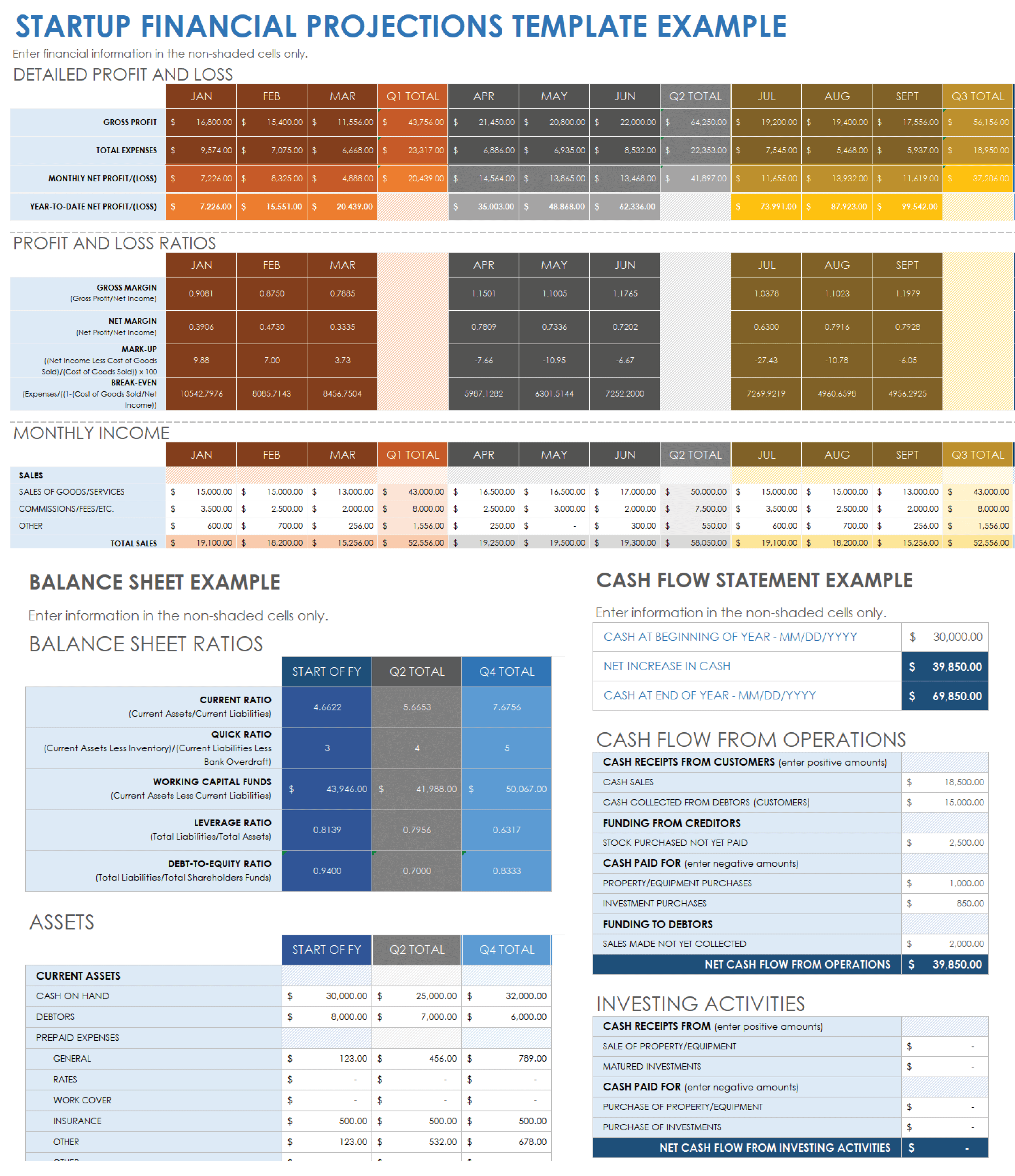
Download a Sample Startup Financial Projection Template for
Download a Blank Startup Financial Projection Template for
This dynamic startup financial projection template is ideal for startup founders and entrepreneurs, as it's designed specifically for the unique needs of startups. Available with or without example text, this template focuses on clearly outlining a startup's initial financial trajectory, an essential component for attracting investors. Users can input projected revenues, startup costs, and funding sources to create a comprehensive financial forecast.
3-Year Financial Projection Template
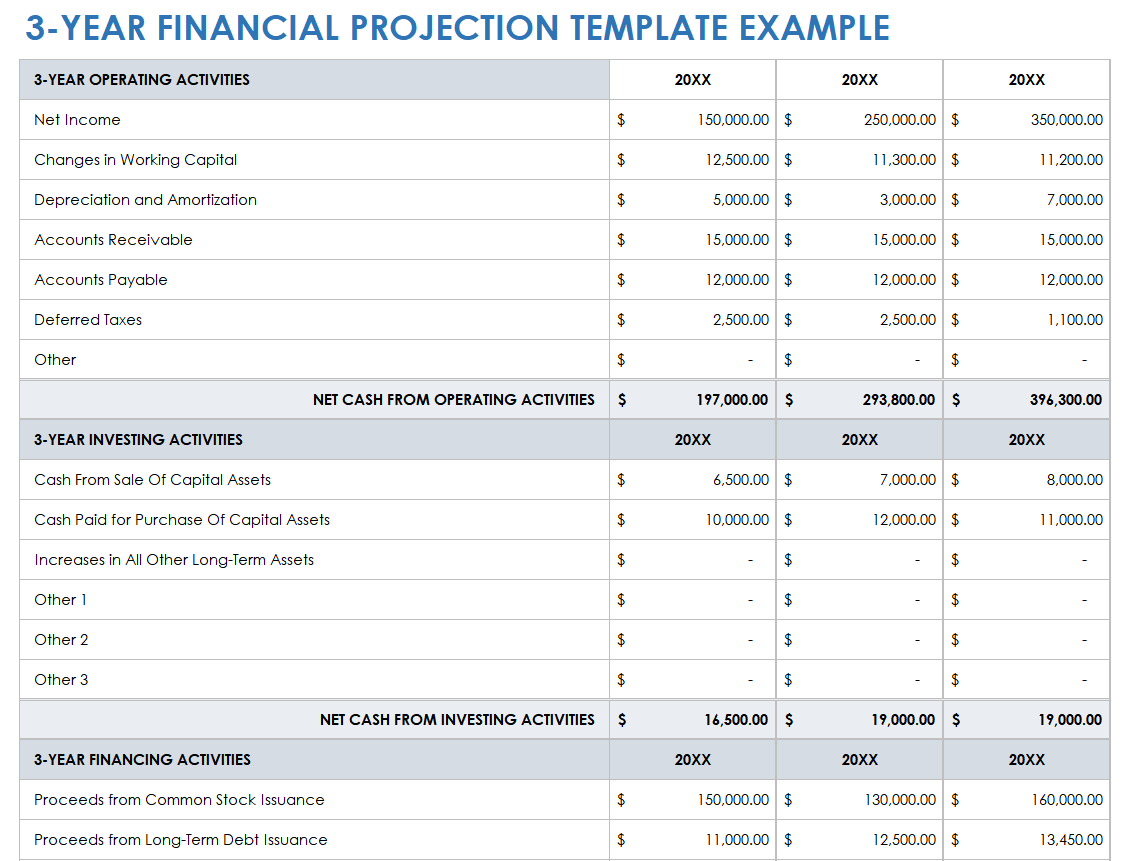
Download a Sample 3-Year Financial Projection Template for
Download a Blank 3-Year Financial Projection Template for
This three-year financial projection template is particularly useful for business strategists and financial planners who are looking for a medium-term financial planning tool. Input data such as projected revenues, expenses, and growth rates for the next three years. Available with or without sample text, this template lets you anticipate financial challenges and opportunities in the medium term, aiding in strategic decision-making and ensuring sustained business growth.
5-Year Financial Forecasting Template
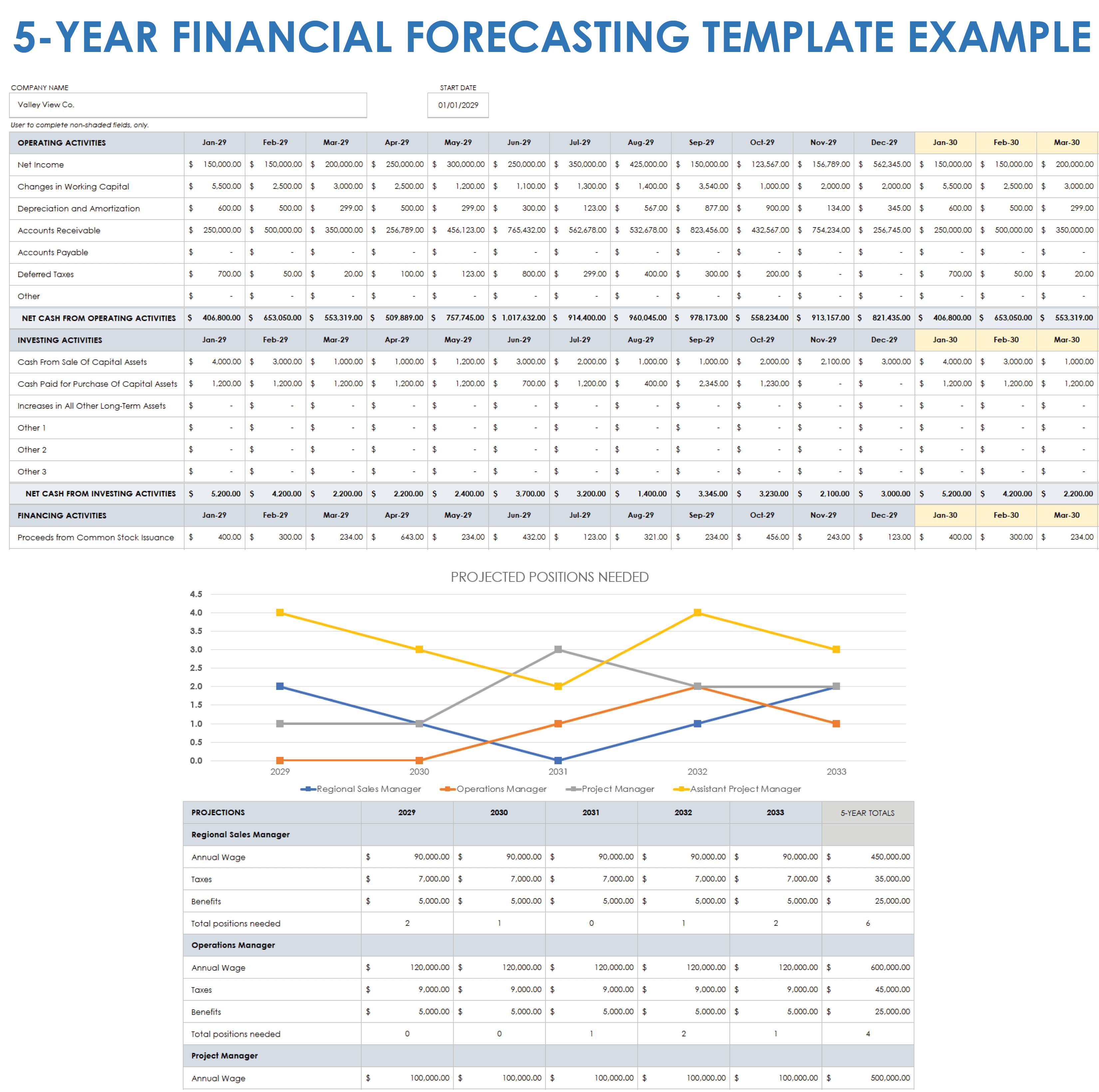
Download a Sample 5-Year Financial Forecasting Template for
Download a Blank 5-Year Financial Forecasting Template for
CFOs and long-term business planners can use this five-year financial forecasting template to get a clear, long-range financial vision. Available with or without example text, this template allows you to plan strategically and invest wisely, preparing your business for future market developments and opportunities. This unique tool offers an extensive outlook for your business’s financial strategy. Simply input detailed financial data spanning five years, including revenue projections, investment plans, and expected market growth. Visually engaging bar charts of key metrics help turn data into engaging narratives.
Small Business Financial Forecast Template
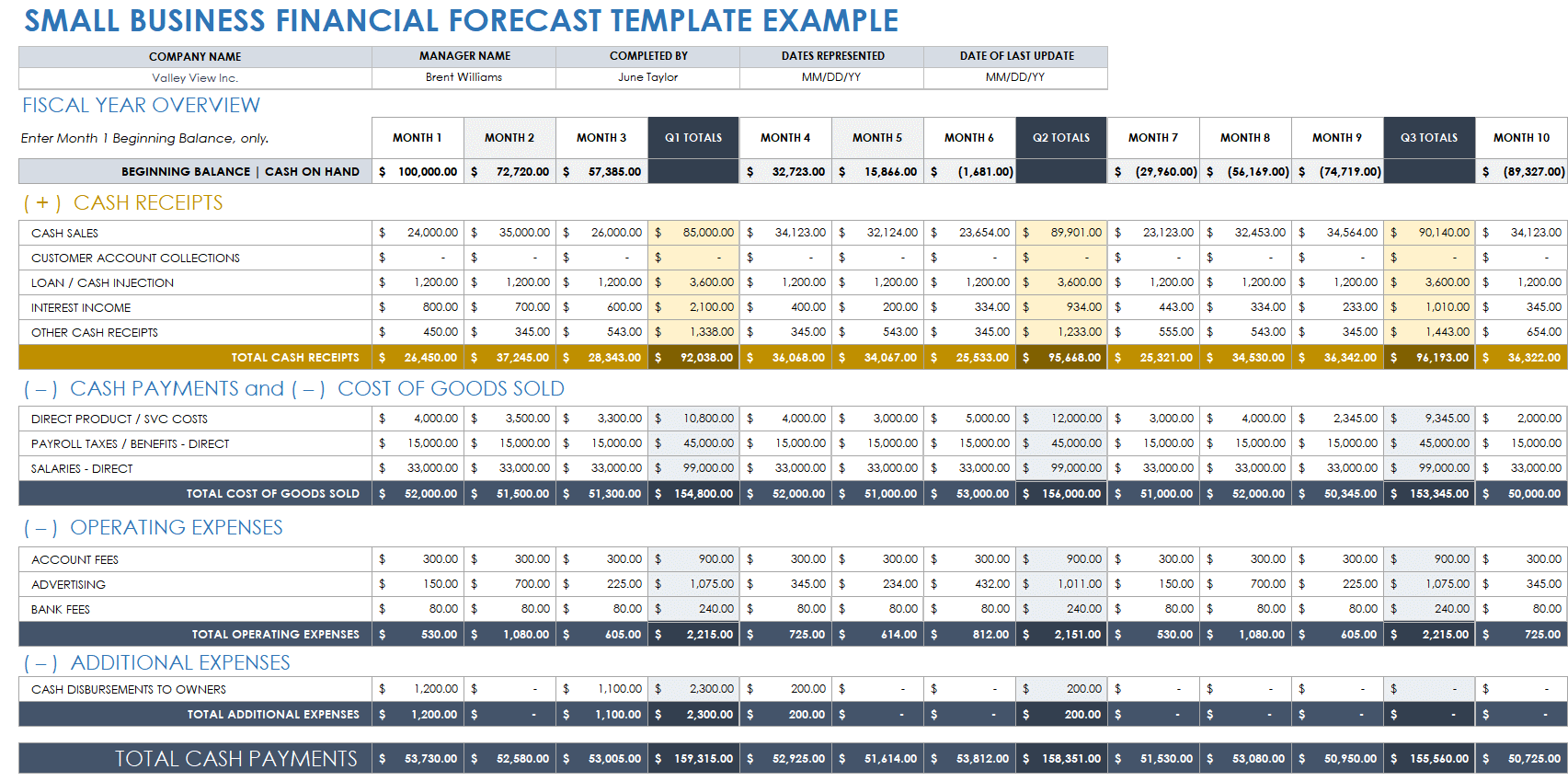
Download a Sample Small Business Financial Forecast Template for
Download a Blank Small Business Financial Forecast Template for
Excel | Google Sheets
The small business financial forecast template is tailored specifically for the scale and specific requirements of small enterprises. Business owners and financial managers can simply input data such as projected sales or expenses. Available with or without sample text, this tool offers the ability to do the following: envision straightforward financial planning; anticipate future financial needs and challenges; make informed decisions; and steer the business toward steady growth.
Elements in a Financial Projection Template
The elements in a financial projection template include future sales, costs, profits, and cash flow. This template illustrates expected receivables, payables, and break-even dates. This tool helps you plan for your business's financial future and growth.
Here are the standard elements in a financial projection template:
- Revenue Projection: This estimates future income from various sources over a specific period.
- Expense Forecast: This predicts future costs, including both fixed and variable expenses.
- Profit and Loss Forecast: This projects the profit or loss by subtracting projected expenses from projected revenues.
- Cash-Flow Projection: This assesses the inflows and outflows of cash, indicating liquidity over time.
- Balance Sheet Projection: This predicts the future financial position, showing assets, liabilities, and equity.
- Break-Even Analysis: This calculates the point at which total revenues equal total costs.
- Capital Expenditure Forecast: This estimates future spending on fixed assets such as equipment or property.
- Debt Repayment Plan: This outlines the schedule for paying back any borrowed funds.
- Sales Forecast: This predicts future sales volume, often broken down by product or service.
- Gross Margin Analysis: This looks at the difference between revenue and cost of goods sold.
Types of Financial Projection and Forecasting Templates
There are many types of financial projection and forecasting templates: basic templates for small businesses; detailed ones for big companies; special ones for startup businesses; and others. There are also sales forecasts, cash-flow estimates, and profit and loss projections.
In addition, financial projection and forecasting templates include long-term planning templates, break-even analyses, budget forecasts, and templates made for specific industries such as retail or manufacturing.
Each template serves different financial planning needs. Determine which one best suits your requirements based on the scale of your business, the complexity of its financial structure, and the specific department that you want to analyze.
Here's a list of the top types of financial projection and forecasting templates:
- Basic Financial Projection Template: Ideal for small businesses or startups, this template provides a straightforward approach to forecasting revenue, expenses, and cash flow.
- Detailed Financial Projection Template: Best for larger businesses or those with complex financial structures, this template offers in-depth projections, including balance sheets, income statements, and cash-flow statements.
- Startup Financial Projection Template: Tailored for startups, this template focuses on funding requirements and early-stage revenue forecasts, both crucial for attracting investors and planning initial operations.
- Sales Forecasting Template: Used by sales and marketing teams to predict future sales, this template helps you set targets and plan marketing strategies.
- Cash-Flow Forecast Template: Essential for financial managers who need to monitor the liquidity of the business, this template projects cash inflows and outflows over a period.
- Profit and Loss Forecast Template (P&L): Useful for business owners and financial officers who need to anticipate profit margins, this template enables you to forecast revenues and expenses.
- Three-Year / Five-Year Financial Projection Template: Suitable for long-term business planning, these templates provide a broader view of your company’s financial future, improving your development strategy and investor presentations.
- Break-Even Analysis Template: Used by business strategists and financial analysts, this template helps you determine when your business will become profitable.
- Budget Forecasting Template: Designed for budget managers, this template uses historical financial data to help you plan your future spending.
- Sector-Specific Financial Projection Template: Designed for specific industries (such as retail or manufacturing), these templates take into account industry-specific factors and benchmarks.
Related Financial Templates
Check out this list of free financial templates related to financial projections and forecasting. You'll find templates for budgeting, tracking profits and losses, planning your finances, and more. These tools help keep your company’s money matters organized and clear.
Free Project Budget Templates
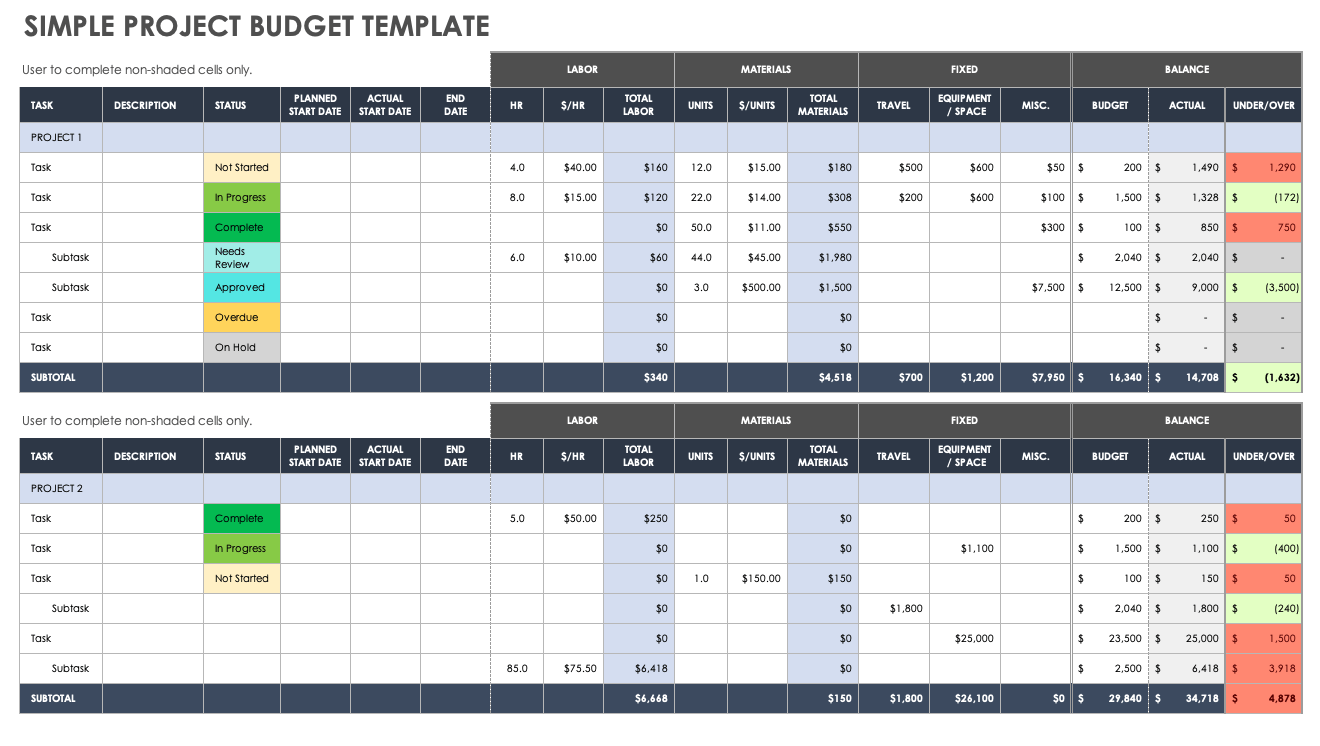
Use one of these project budget templates to maintain control over project finances, ensuring costs stay aligned with the allocated budget and improving overall financial management.
Free Monthly Budget Templates
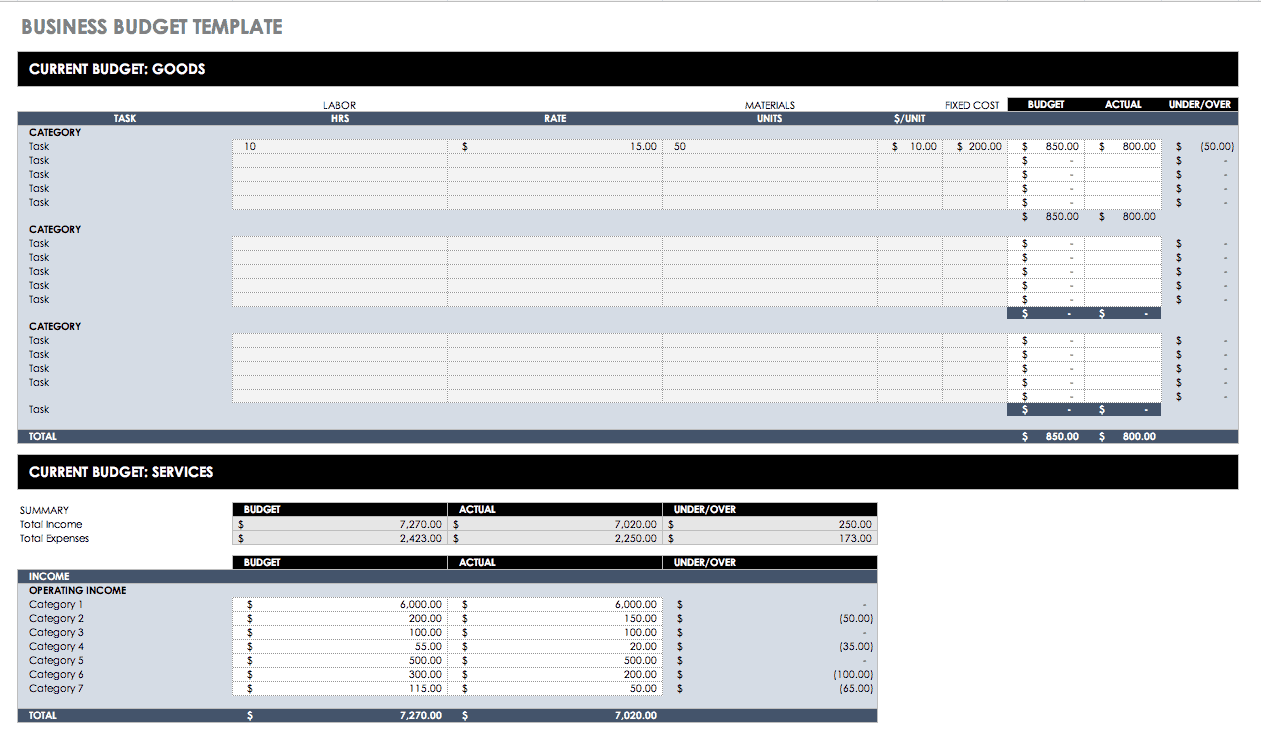
Use one of these monthly budget templates to effectively track and manage your business’s income and expenses, helping you plan financially and save money.
Free Expense Report Templates
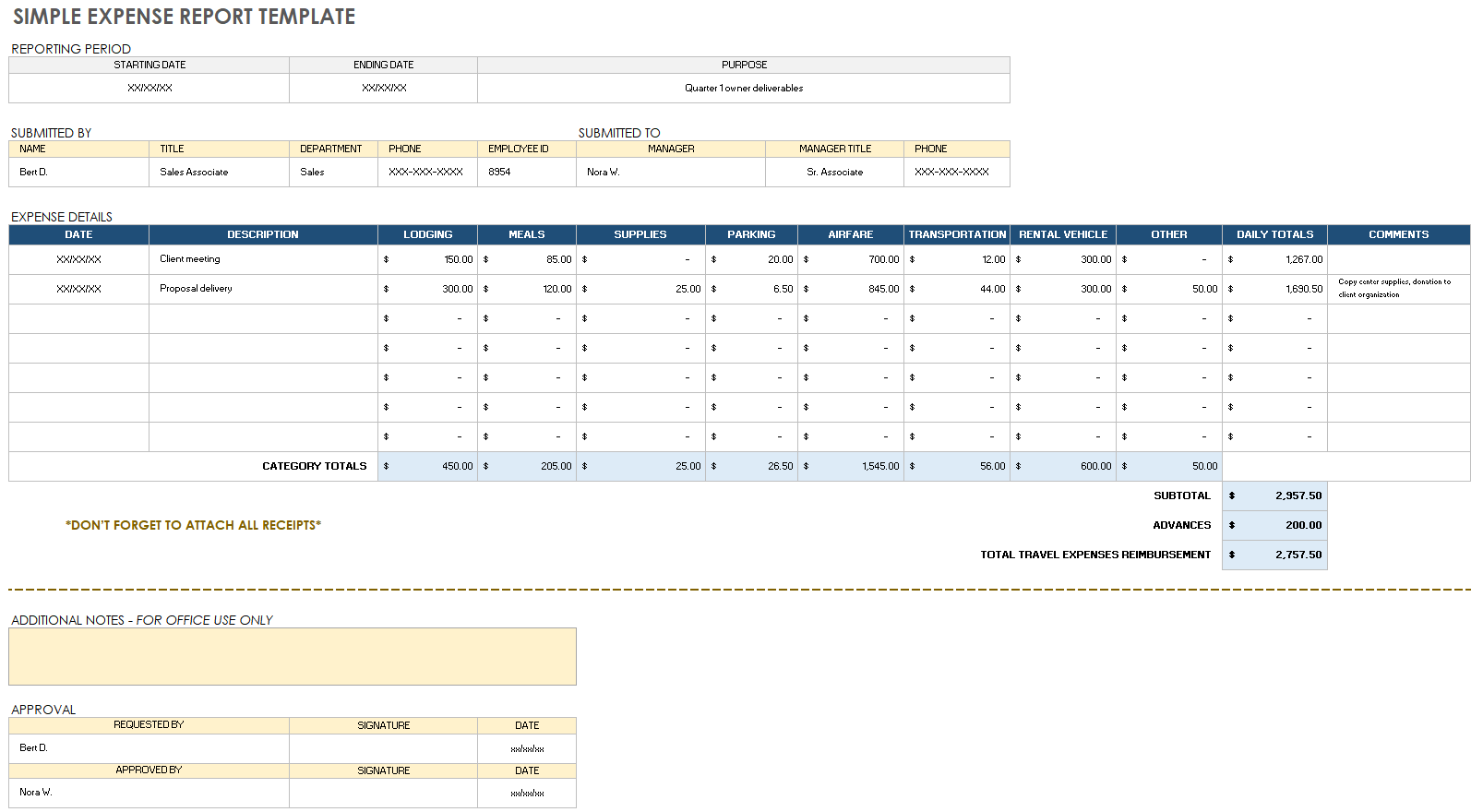
Use one of these expense report templates to systematically track and document all business-related expenditures, ensuring accurate reimbursement and efficient financial record-keeping.
Free Balance Sheet Templates
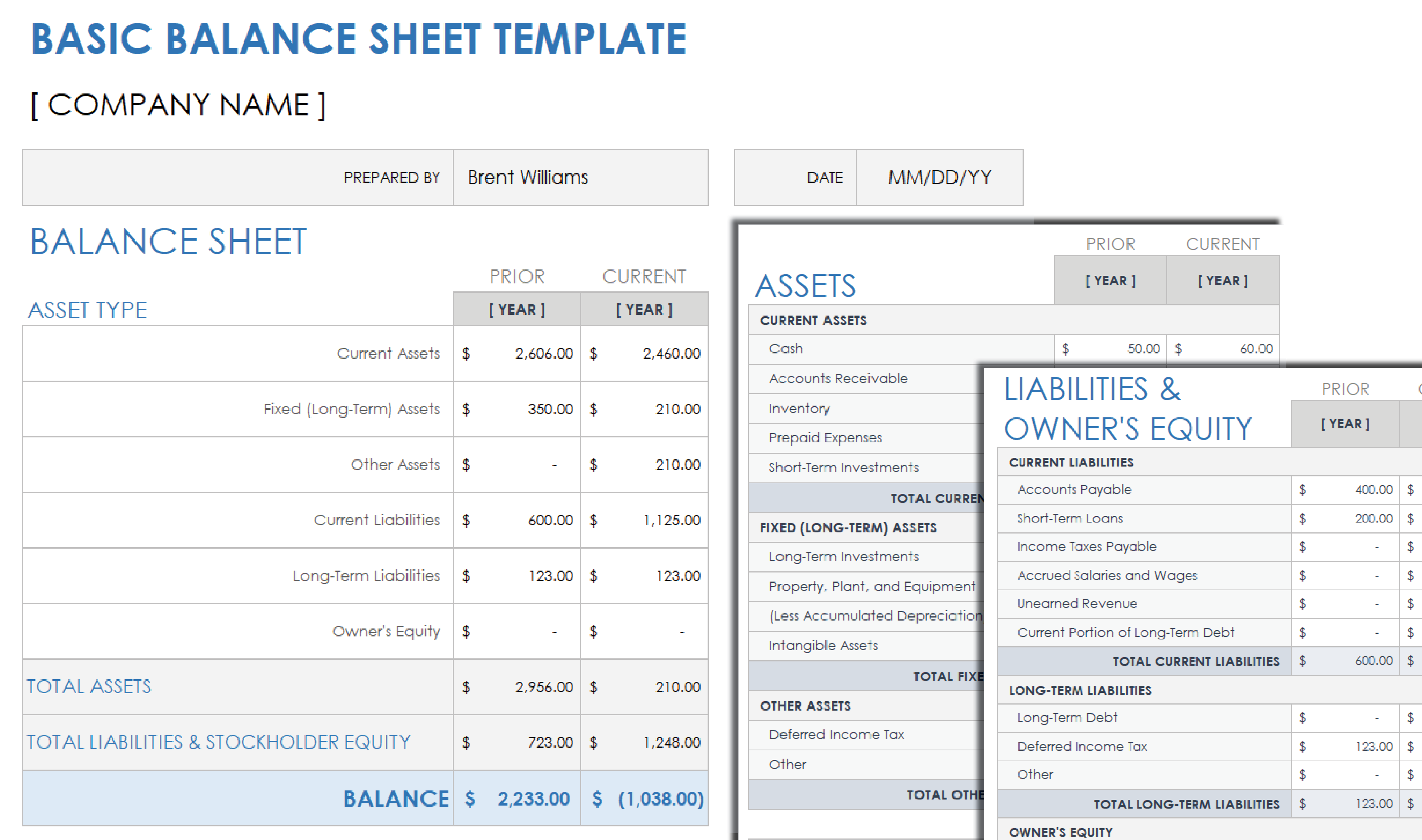
Use one of these balance sheet templates to summarize your company's financial position at a given time.
Free Cash-Flow Forecast Templates
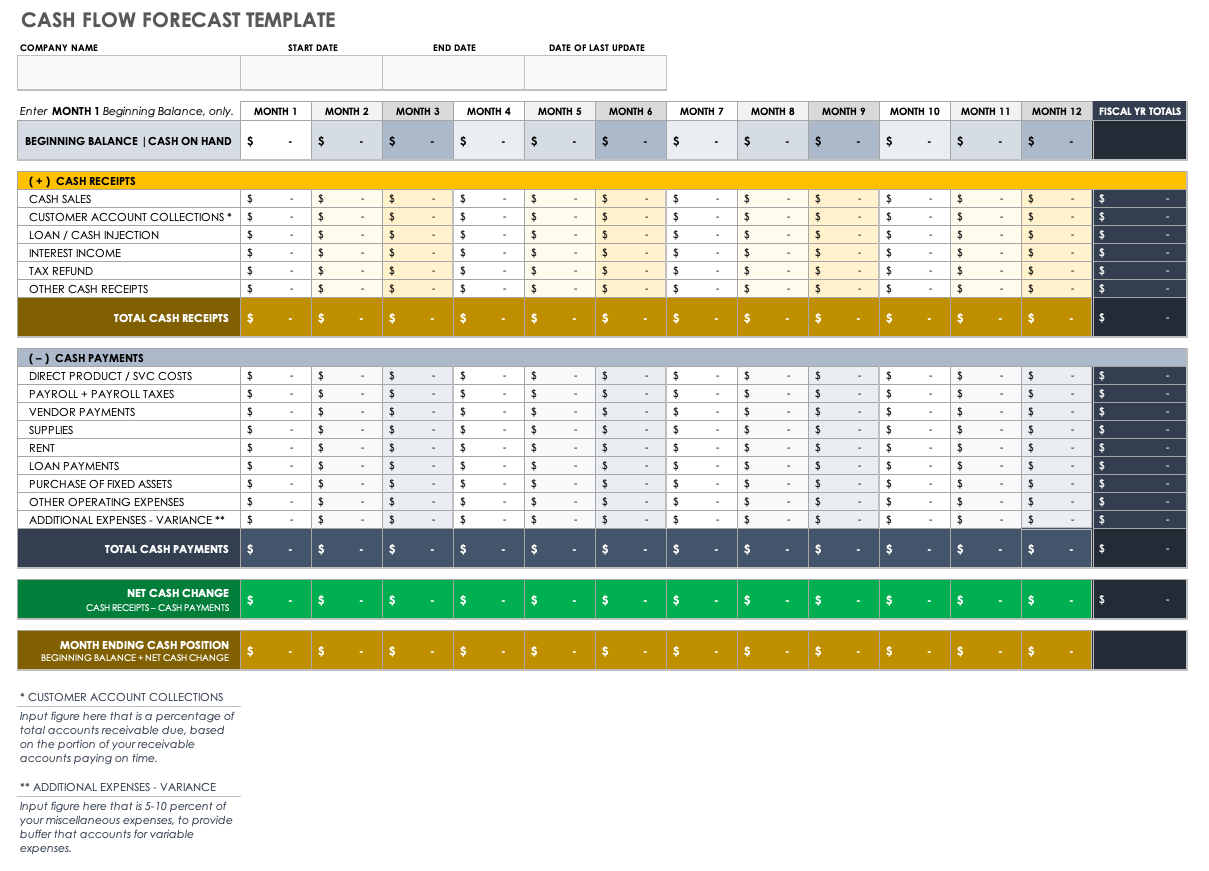
Use one of these cash-flow forecast templates to predict future cash inflows and outflows, helping you manage liquidity and make informed financial decisions.
Free Cash-Flow Statement Templates

Use one of these cash-flow statement templates to track the movement of cash in and out of your business, so you can assess your company’s level of liquidity and financial stability.
Free Discounted Cash-Flow (DCF) Templates
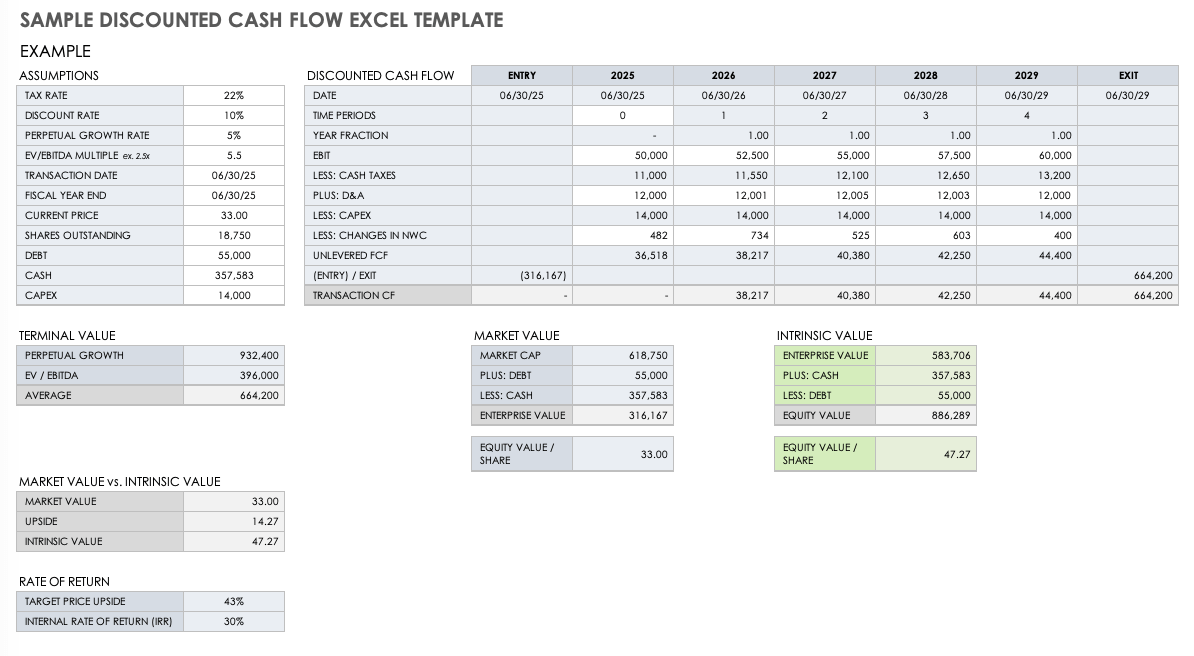
Use one of these discounted cash-flow (DCF) templates to evaluate the profitability of investments or projects by calculating their present value based on future cash flows.
Free Financial Dashboard Templates
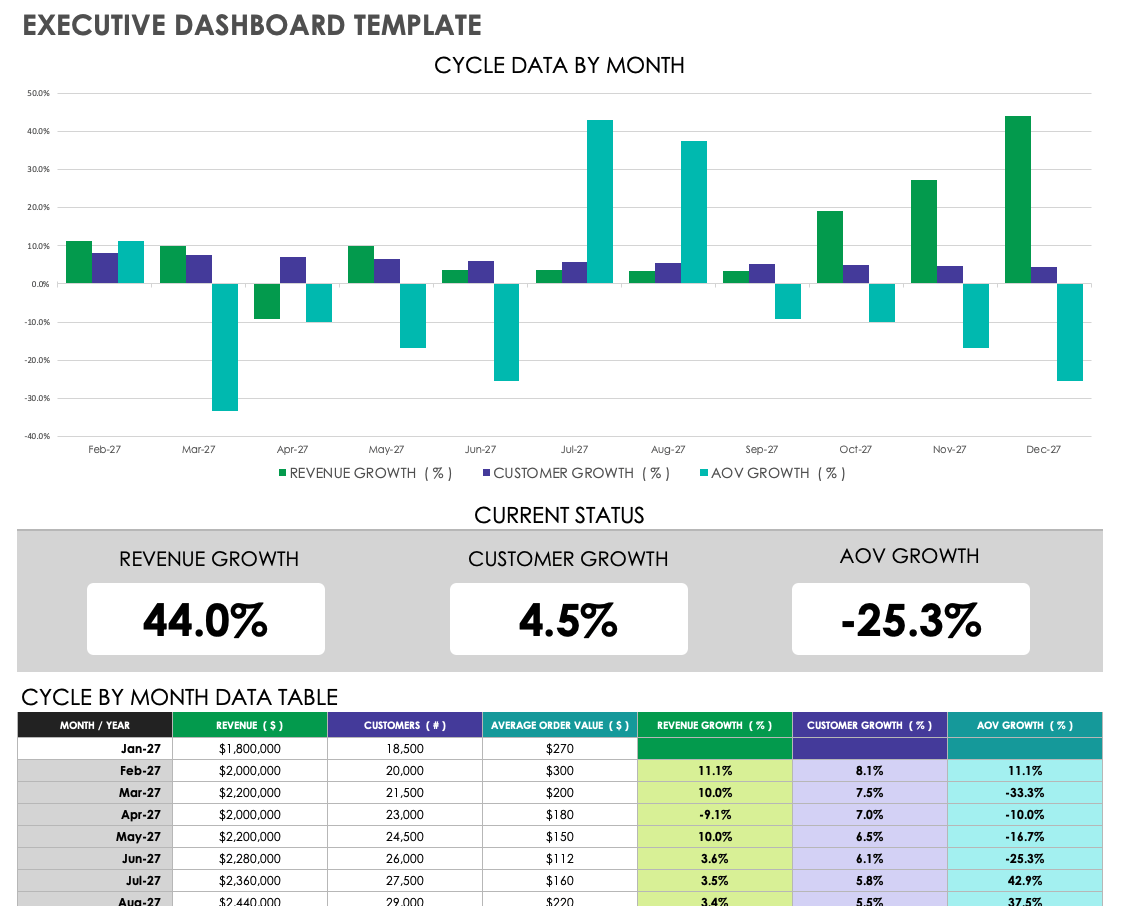
Use one of these financial dashboard templates to get an at-a-glance view of key financial metrics, so you can make decisions quickly and manage finances effectively.
Related Customer Stories
Free financial planning templates.
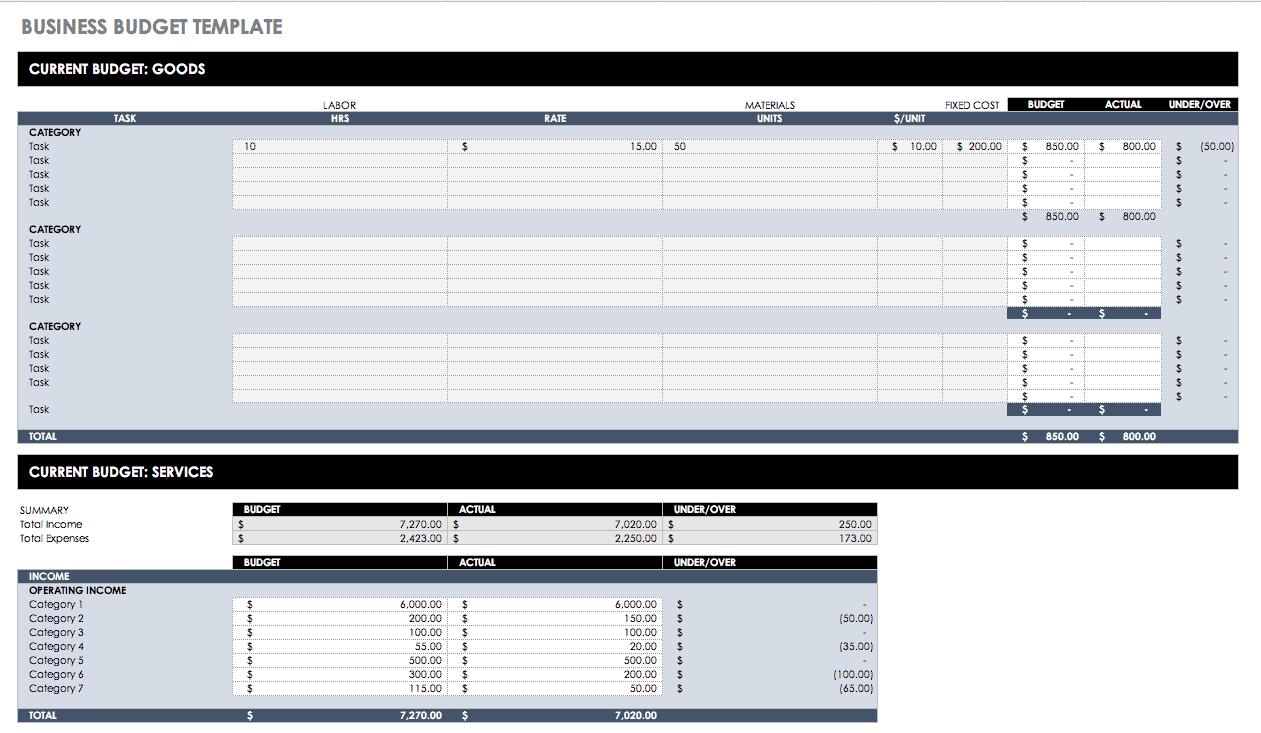
Use one of these financial planning templates to strategically organize and forecast future finances, helping you set realistic financial goals and ensure long-term business growth.
Free Profit and Loss (P&L) Templates
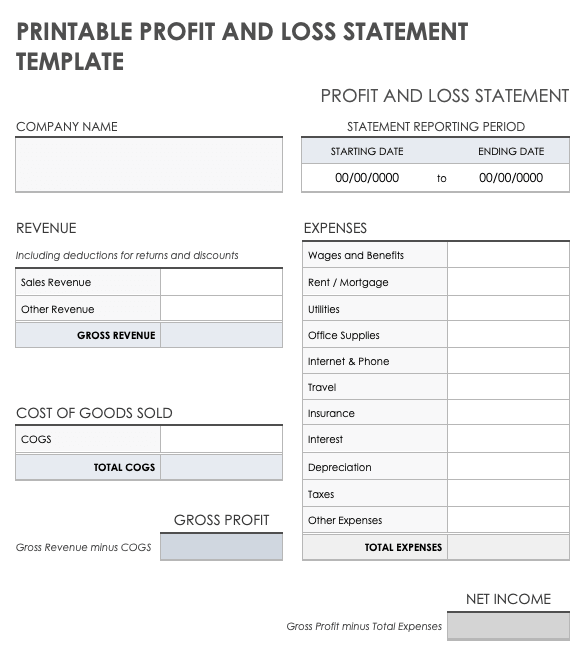
Use one of these profit and loss (P&L) templates to systematically track income and expenses, giving you a clear picture of your company's profitability over a specific period.
Free Billing and Invoice Templates
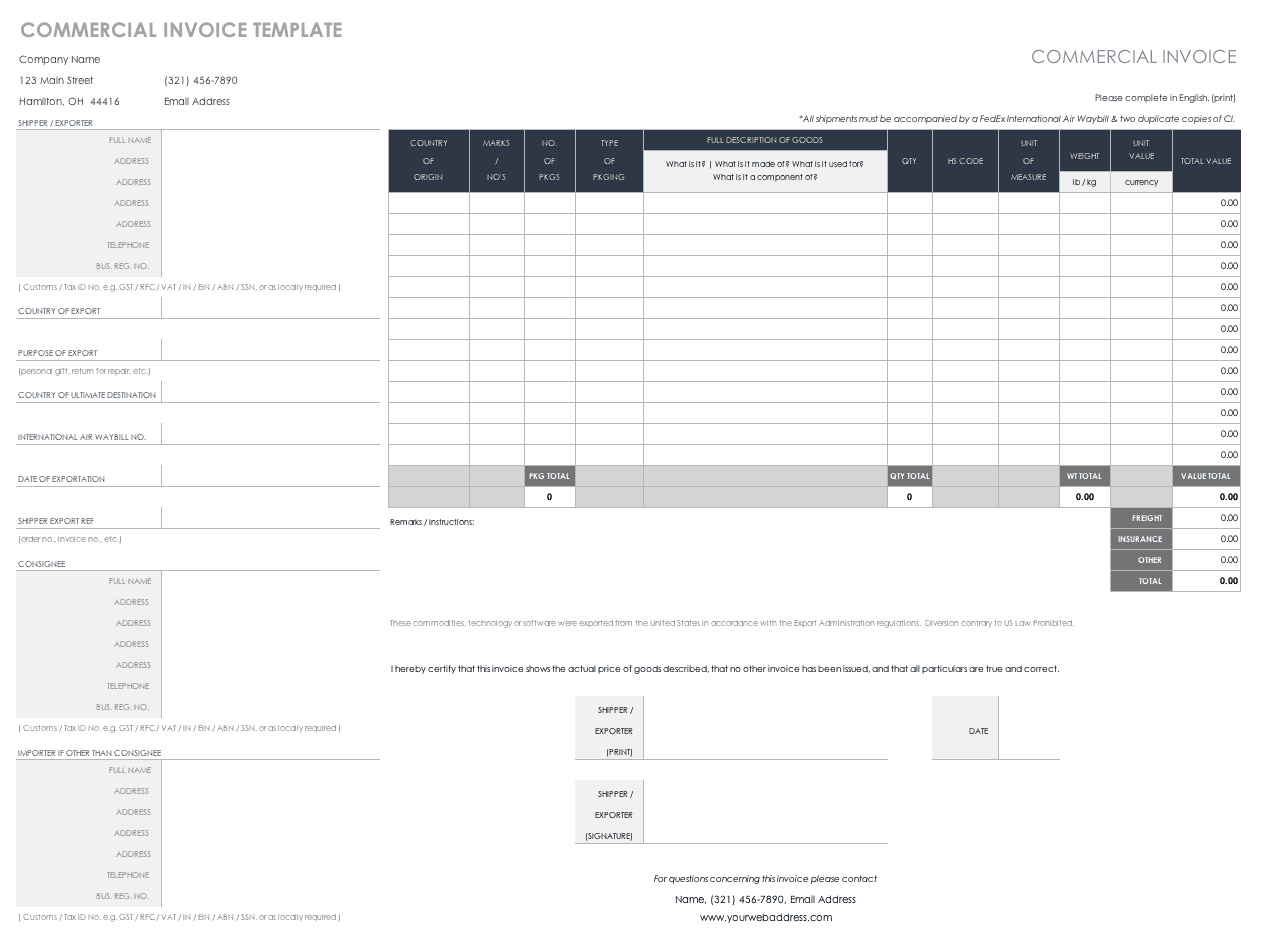
Use one of these billing and invoice templates to streamline the invoicing process and ensure that you bill clients accurately and professionally for services or products.
Plan and Manage Your Company’s Financial Future with Financial Projection and Forecasting Templates from Smartsheet
Empower your people to go above and beyond with a flexible platform designed to match the needs of your team — and adapt as those needs change.
The Smartsheet platform makes it easy to plan, capture, manage, and report on work from anywhere, helping your team be more effective and get more done. Report on key metrics and get real-time visibility into work as it happens with roll-up reports, dashboards, and automated workflows built to keep your team connected and informed.
When teams have clarity into the work getting done, there’s no telling how much more they can accomplish in the same amount of time. Try Smartsheet for free, today.
Discover why over 90% of Fortune 100 companies trust Smartsheet to get work done.
- Search Search Please fill out this field.
- Building Your Business
How To Create Financial Projections for Your Business
Learn how to anticipate your business’s financial performance
:max_bytes(150000):strip_icc():format(webp)/ScreenShot2020-03-26at1.24.14PM-16d178cb2ee74d71946d658ab027e210.png)
- Understanding Financial Projections & Forecasting
Why Forecasting Is Critical for Your Business
Key financial statements for forecasting, how to create your financial projections, frequently asked questions (faqs).
Maskot / Getty Images
Just like a weather forecast lets you know that wearing closed-toe shoes will be important for that afternoon downpour later, a good financial forecast allows you to better anticipate financial highs and lows for your business.
Neglecting to compile financial projections for your business may signal to investors that you’re unprepared for the future, which may cause you to lose out on funding opportunities.
Read on to learn more about financial projections, how to compile and use them in a business plan, and why they can be crucial for every business owner.
Key Takeaways
- Financial forecasting is a projection of your business's future revenues and expenses based on comparative data analysis, industry research, and more.
- Financial projections are a valuable tool for entrepreneurs as they offer insight into a business's ability to generate profit, increase cash flow, and repay debts, which can be attractive to investors.
- Some of the key components to include in a financial projection include a sales projection, break-even analysis, and pro forma balance sheet and income statement.
- A financial projection can not only attract investors, but helps business owners anticipate fixed costs, find a break-even point, and prepare for the unexpected.
Understanding Financial Projections and Forecasting
Financial forecasting is an educated estimate of future revenues and expenses that involves comparative analysis to get a snapshot of what could happen in your business’s future.
This process helps in making predictions about future business performance based on current financial information, industry trends, and economic conditions. Financial forecasting also helps businesses make decisions about investments, financing sources, inventory management, cost control strategies, and even whether to move into another market.
Developing both short- and mid-term projections is usually necessary to help you determine immediate production and personnel needs as well as future resource requirements for raw materials, equipment, and machinery.
Financial projections are a valuable tool for entrepreneurs as they offer insight into a business's ability to generate profit, increase cash flow, and repay debts. They can also be used to make informed decisions about the business’s plans. Creating an accurate, adaptive financial projection for your business offers many benefits, including:
- Attracting investors and convincing them to fund your business
- Anticipating problems before they arise
- Visualizing your small-business objectives and budgets
- Demonstrating how you will repay small-business loans
- Planning for more significant business expenses
- Showing business growth potential
- Helping with proper pricing and production planning
Financial forecasting is essentially predicting the revenue and expenses for a business venture. Whether your business is new or established, forecasting can play a vital role in helping you plan for the future and budget your funds.
Creating financial projections may be a necessary exercise for many businesses, particularly those that do not have sufficient cash flow or need to rely on customer credit to maintain operations. Compiling financial information, knowing your market, and understanding what your potential investors are looking for can enable you to make intelligent decisions about your assets and resources.
The income statement, balance sheet, and statement of cash flow are three key financial reports needed for forecasting that can also provide analysts with crucial information about a business's financial health. Here is a closer look at each.
Income Statement
An income statement, also known as a profit and loss statement or P&L, is a financial document that provides an overview of an organization's revenues, expenses, and net income.
Balance Sheet
The balance sheet is a snapshot of the business's assets and liabilities at a certain point in time. Sometimes referred to as the “financial portrait” of a business, the balance sheet provides an overview of how much money the business has, what it owes, and its net worth.
The assets side of the balance sheet includes what the business owns as well as future ownership items. The other side of the sheet includes liabilities and equity, which represent what it owes or what others owe to the business.
A balance sheet that shows hypothetical calculations and future financial projections is also referred to as a “pro forma” balance sheet.
Cash Flow Statement
A cash flow statement monitors the business’s inflows and outflows—both cash and non-cash. Cash flow is the business’s projected earnings before interest, taxes, depreciation, and amortization ( EBITDA ) minus capital investments.
Here's how to compile your financial projections and fit the results into the three above statements.
A financial projections spreadsheet for your business should include these metrics and figures:
- Sales forecast
- Balance sheet
- Operating expenses
- Payroll expenses (if applicable)
- Amortization and depreciation
- Cash flow statement
- Income statement
- Cost of goods sold (COGS)
- Break-even analysis
Here are key steps to account for creating your financial projections.
Projecting Sales
The first step for a financial forecast starts with projecting your business’s sales, which are typically derived from past revenue as well as industry research. These projections allow businesses to understand what their risks are and how much they will need in terms of staffing, resources, and funding.
Sales forecasts also enable businesses to decide on important levels such as product variety, price points, and inventory capacity.
Income Statement Calculations
A projected income statement shows how much you expect in revenue and profit—as well as your estimated expenses and losses—over a specific time in the future. Like a standard income statement, elements on a projection include revenue, COGS, and expenses that you’ll calculate to determine figures such as the business’s gross profit margin and net income.
If you’re developing a hypothetical, or pro forma, income statement, you can use historical data from previous years’ income statements. You can also do a comparative analysis of two different income statement periods to come up with your figures.
Anticipate Fixed Costs
Fixed business costs are expenses that do not change based on the number of products sold. The best way to anticipate fixed business costs is to research your industry and prepare a budget using actual numbers from competitors in the industry. Anticipating fixed costs ensures your business doesn’t overpay for its needs and balances out its variable costs. A few examples of fixed business costs include:
- Rent or mortgage payments
- Operating expenses (also called selling, general and administrative expenses or SG&A)
- Utility bills
- Insurance premiums
Unfortunately, it might not be possible to predict accurately how much your fixed costs will change in a year due to variables such as inflation, property, and interest rates. It’s best to slightly overestimate fixed costs just in case you need to account for these potential fluctuations.
Find Your Break-Even Point
The break-even point (BEP) is the number at which a business has the same expenses as its revenue. In other words, it occurs when your operations generate enough revenue to cover all of your business’s costs and expenses. The BEP will differ depending on the type of business, market conditions, and other factors.
To find this number, you need to determine two things: your fixed costs and variable costs. Once you have these figures, you can find your BEP using this formula:
Break-even point = fixed expenses ➗ 1 – (variable expenses ➗ sales)
The BEP is an essential consideration for any projection because it is the point at which total revenue from a project equals total cost. This makes it the point of either profit or loss.
Plan for the Unexpected
It is necessary to have the proper financial safeguards in place to prepare for any unanticipated costs. A sudden vehicle repair, a leaky roof, or broken equipment can quickly derail your budget if you aren't prepared. Cash management is a financial management plan that ensures a business has enough cash on hand to maintain operations and meet short-term obligations.
To maintain cash reserves, you can apply for overdraft protection or an overdraft line of credit. Overdraft protection can be set up by a bank or credit card business and provides short-term loans if the account balance falls below zero. On the other hand, a line of credit is an agreement with a lending institution in which they provide you with an unsecured loan at any time until your balance reaches zero again.
How do you make financial projections for startups?
Financial projections for startups can be hard to complete. Historical financial data may not be available. Find someone with financial projections experience to give insight on risks and outcomes.
Consider business forecasting, too, which incorporates assumptions about the exponential growth of your business.
Startups can also benefit from using EBITDA to get a better look at potential cash flow.
What are the benefits associated with forecasting business finances?
Forecasting can be beneficial for businesses in many ways, including:
- Providing better understanding of your business cash flow
- Easing the process of planning and budgeting for the future based on income
- Improving decision-making
- Providing valuable insight into what's in their future
- Making decisions on how to best allocate resources for success
How many years should your financial forecast be?
Your financial forecast should either be projected over a specific time period or projected into perpetuity. There are various methods for determining how long a financial forecasting projection should go out, but many businesses use one to five years as a standard timeframe.
U.S. Small Business Administration. " Market Research and Competitive Analysis ."
Score. " Financial Projections Template ."

Five-Year Sales Forecast Template
Establish the aim of the forecast, identify relevant historical sales data.
- 1 Internal sales records
- 2 Third-party market reports
- 3 Salesforce data
Collect sales data from last five years
Adjust historical data for inflation or price changes, analyze industry trends and economic indicators, identify growth opportunities and business risks.
- 1 New market segments
- 2 Product diversification
- 3 Partnership opportunities
- 4 International expansion
- 5 Improved customer experience
- 1 Intense competition
- 2 Economic downturn
- 3 Change in customer preferences
- 4 Regulatory changes
- 5 Supply chain disruptions
Develop assumptions for future sales
Calculate forecasted sales for next five years, review and adjust forecasts based on assumptions.
- 1 Evaluate assumptions
- 2 Analyze accuracy of previous forecasts
- 3 Incorporate new data
- 4 Revise growth projections
- 5 Adjust for unforeseen factors
Approval: Sales Forecast
- Calculate forecasted sales for next five years Will be submitted
- Review and adjust forecasts based on assumptions Will be submitted
Document the forecasting process
Create a visual representation of the forecasted data.
- 1 Line chart
- 2 Bar graph
- 3 Pie chart
- 4 Area chart
- 5 Scatter plot
Prepare a written explanation of the forecast findings
Incorporate forecast into overall business plan.
- 1 Review business plan objectives
- 2 Adjust financial projections
- 3 Align sales strategies
- 4 Revise marketing plans
- 5 Update operational targets
Review the accuracy of the forecast periodically
Adjust the forecast as needed based on actual sales data, approval: adjusted forecast.
- Review the accuracy of the forecast periodically Will be submitted
- Adjust the forecast as needed based on actual sales data Will be submitted
Communicate final forecast to stakeholders
Implement sales strategies based on forecast, monitor and report on progress against forecast, take control of your workflows today., more templates like this.

5-Year Financial Plan Template
Whether you are already running a business, or making plans to start one up, financial planning is a vital part of ensuring your success. Not knowing your expected income and expenditure will make it difficult to plan, and hard to find investors.
This 5-Year Financial Plan spreadsheet will make it easy for you to calculate profit and loss, view your balance sheet and cash flow projections, as well as calculate any loan payments you may have. Whilst the wording on this spreadsheet is focussed around products, it can just as easily be used for businesses who largely provide services to their customers.
5-Year Financial Plan Projection

How to use Financial Plan
Model inputs.
Use the Model Inputs sheet to enter information about your business that will be used to model results seen on the other pages.
Forecasted Revenue
The forecasted revenue section allows you to estimate your revenue for 4 different products. Simply use the white boxes to enter the number of units you expect to sell, and the price you expect to sell them for, and the spreadsheet will calculate the total revenue for each product for the year. If you want to give your products names, simply type over the words "Product 1", "Product 2" etc. and these names will be carried through to the rest of the spreadsheet.
Cost of Goods Sold
Your margins are unlikely to be the same on all of your products, so the cost of goods sold allows you to enter your expected gross margin for each product into the white boxes in Column B. The spreadsheet will automatically calculate the annual cost of goods sold based on this information, along with your forecasted revenue.
Annual Maintenance, Repair and Overhaul
As the cost of annual maintenance, repair and overhaul is likely to increase each year, you will need to enter a percentage factor on your capital equipment in the white box in Column B. This will be used to calculate your operating expenses in the profit and loss sheet.
Asset Depreciation
Use the white box to enter the number of years you expect your assets to depreciate over. This may vary greatly from business to business, as assets in some sectors depreciate much more quickly than they do in others.
In most parts of the world, you will have to pay income on your earnings. Enter the annual tax rate that applies to your circumstances in the white box in Column B. If you have to pay any other taxes, these can be entered later on the Profit and Loss sheet.
Although you cannot be certain of the level of inflation, you will still need to try and plan for it when coming up with a 5-year financial plan. The International Monetary Fund provide forecasts for a number of countries, so is a good place to look if you are unsure what to enter here. Simply enter your inflation rate in the white box.
Product Price Increase
As a consumer, you are no doubt aware that the price of products goes up over time. Enter a number in the white box to show the expected annual price increase of your products to enable the spreadsheet to calculate income in future years. If you are unsure what to put here, increasing your product price in line with inflation is a good starting point. If your business is just starting out, you may be able to command higher prices for your products or services as the years go on, as you build up brand recognition and a good reputation.
The funding section allows you to enter information about your business loan. To use this section, simply fill in the three white boxes representing the amount of the loan, the annual interest rate and the term of the loan in months - for example, 12 for 1 year, 24 for 2 years, 36 for 3 years, 48 for 4 years, or 60 for a 5 year loan.
Profit and loss
This sheet calculates your profit and loss for each year over a 5 year period. The profit and loss assumptions, along with income, are automatically calculated using information entered in the model inputs sheet.
Non-Operation Income
You may have, or be expecting some income in addition to your operating income. These can be entered manually in the white cells in Column B for Year 1, Column C for Year 2 and so on. There are pre-entered categories for rental, lost income and loss (or gain) on the sale of assets, as well as an additional row where you can enter your own non-operation income.
Operating Expenses
Some parts of this are already filled in based on information you put on the Model Inputs, for example, depreciation, maintenance and interest on long-term debt. Years 2-5 are also filled in for you across all categories based on the inflation information entered in the Model Inputs sheet. You therefore only need to enter your Sales and Marketing, Insurance, Payroll and Payroll Tax, Property Taxes, Utilities, Administration Fees and any Other Expenses into the white cells in Column B for Year 1.
Non-recurring Expenses
This section is for entering any expenses that you will not be paying on an annual basis. The Unexpected Expenses row allows you to enter a contingency for unexpected expenses, whilst the Other Expenses row allows you to enter any other one off expenses you may be expecting to make, for example the purchase of new equipment part way into your 5 year plan.
Income Tax is filled in based on the information you enter into the model inputs. Depending on where your business is based, you may find yourself having to pay other taxes. These can be entered in the Other Tax row. You can rename this row by typing over the "Other Tax (specify)" text.
Balance Sheet
The annual balances for Years 1-5 are, in most cases, filled in for you, based on the information you have entered on the Model Inputs sheet and in the Initial Balance column of the Balance Sheet column itself. This makes it very easy to use.
Current Assets
This is where you can enter the value of any of your current assets, with spaces to enter information about Cash and Short-term Investments, Accounts Receivable, Inventory, Prepaid Expenses and Deferred Income Tax. At the bottom of this section is a space for you to enter any other current assets you may have that do not fall into any of these categories.
Property and Equipment
Depending on the nature of your business, you may have assets such as Buildings, Land, Capital Improvements and Machinery. Enter the value of these assets into Column B, and these values will be copied over to each of the 5 years of the plan. The depreciation information entered into the Model Inputs sheet will be used to calculate the depreciation expenses, which allows a total for property and equipment to be calculated automatically.
Other Assets
This section is for entering information on any assets that don't fit in the other sections. These could be Goodwill Payments, Deferred Income Tax, Long-term Investments, Deposits, or any Other long-term assets. Enter the information into Column B, and it will be carried across to the yearly columns automatically.
Current Liabilities
As well as assets, your business is likely to have liabilities. There are spaces to enter Accounts Payable, Accrued Expenses, Notes Payable and Short-term Debt, Capital Leases and Other current liabilities. Just leave blank any rows where you do not have any liabilities, and the totals will be calculated for you.
Your long-term debt/loan information will have already been entered in the Model Inputs sheet, so the only thing to do here is to enter any other long-term debt. Unlike much of the rest of the Balance Sheet, you can manually enter different amounts for each year, as you may, for example, be expecting to take on another loan to purchase some new equipment in Year 3 as your business expands.
Other Liabilities
Use this section to enter any liabilities not covered by the pre-defined labels. You can amend the text in Column A, in order to specify the liabilities, and then enter the cost of these liabilities in Column B.
Your business is likely to have some equity, and this can be entered into this section. You can fill out the Owner's Equity, Paid-in Capital and Preferred Equity in Column B. Your retained earnings are automatically calculated based on the Profit and Loss sheet.
Much of the information on the cash flow sheet is based on calculations in the Balance Sheet. It is important to plan your cash flow carefully, so that you know what funds you will have available to buy new stock and equipment.
Operating Activities
Much of this section is automatically filled in based on your balance sheet. There are only three rows to fill out, which are Amortization, Other Liabilities and Other Operating Cash Flow. You only need to fill out the white boxes in Column B for Year 1, as these values will automatically be carried over into subsequent years for you.
Investing Activities
Your capital expenditures and sale of fixed assets will be automatically populated if you have filled out the relevant sections of the Balance Sheet. They will be blank if they do not apply. As investing activities can vary year on year, you will need to fill out any investment activities for each of the 5 years in the appropriate columns for Acquisition of Business, and any Other Investing Cash Flow items.
Financing Activities
The long-term debt/financing row will be pre-filled based on the loan information previously entered. Use Column B to fill out your Preferred Stock, Total Cash Dividends Paid, Common Stock and Other Financing Cash Flow items for Year 1. This information will automatically carried over to Years 2-5.
Loan Payment Calculator
There is nothing to enter on this sheet, as it is for information only. Whether or not you already have a loan, or are using this spreadsheet as a part of a business plan to help you obtain one, it allows you to easily see how much you will be paying each month, showing how much you are paying off your loan, and how much you are paying in interest. This will allow you to get an idea of whether or not you can afford to borrow a bit extra, if you feel it would allow you to push your business into higher places, or whether you need to shop around for a better interest rate or adjust the loan term in order to afford the loan payments.
Related Templates

Red Devil, AK
Around the globe, hurricane tracker.
Severe Weather
Radar & Maps
News & features, winter center, temperature graph, further ahead.
Top Stories
At least 21 dead as suspected tornadoes tear across southern states
12 hours ago

Millions at risk for severe weather in the Northeast on Memorial Day
9 hours ago

Weather News
Up to 2,000 people feared buried under Papua New Guinea landslide
16 hours ago

2024 Atlantic hurricanes are primed for 'rapid intensification'

Multiple days of severe weather to focus on US Great Plains to end May

Featured Stories
These are the hurdles for air travelers this busy summer

The top 10 US beaches for 2024, according to ‘Dr. Beach’

NASA announces new target date for crewed Boeing Starliner mission

Mountaineer dead, Nepali sherpa missing after trying to summit Everest

USS Harder: Wreck of famed US Navy World War II sub found off the Phil...

Weather Near Red Devil:
- Anchorage , AK
- Knik-Fairview , AK
- Tanaina , AK
We have updated our Privacy Policy and Cookie Policy .
Get AccuWeather alerts as they happen with our browser notifications.
Notifications Enabled
Thanks! We’ll keep you informed.

An official website of the United States government
Here's how you know
Official websites use .gov A .gov website belongs to an official government organization in the United States.
Secure .gov websites use HTTPS A lock ( Lock A locked padlock ) or https:// means you’ve safely connected to the .gov website. Share sensitive information only on official, secure websites.
What should I do if I get a call claiming there is a problem with my Social Security number or account?
Plan for retirement
Apply for your monthly retirement benefit any time between age 62 and 70. We calculate your payment by looking at how much you've earned throughout your life. The amount will be higher the longer you wait to apply, up until age 70. The timing is up to you and should be based on your own personal needs.
Get an estimate Get an estimate
Check your Social Security account to see how much you'll get when you apply at different times between age 62 and 70.
- View estimate
- Create account
Other factors that can affect your amount
Paying for healthcare.
You're eligible to get Medicare at age 65 and the sign-up process for Part A (hospital insurance) and Part B (medical insurance) is completed through us. If you decide to sign up for Part B, the cost will be taken out of your monthly benefit amount. Be sure to plan ahead for that reduction.
Determine when to sign up for Medicare
Withholding taxes from benefit payments
You may pay federal income taxes on your benefits if your combined income (50% of your benefit amount plus any other earned income) exceeds $25,000/year filing individually or $32,000/year filing jointly. You can pay the IRS directly or have taxes withheld from your payment.
Request to withhold taxes
Continuing to work
Before Full Retirement Age (between age 66 and 67), your benefit payment will be temporarily reduced if you earn more than your earnings limit this year. You can work after Full Retirement Age and earn as much as you’d like without reducing your benefit payment.
Knowing your "Full Retirement Age"
"Full Retirement Age" is a point in time between age 66 and 67, which we use to determine your benefit amount, as well as your family's benefits. Regardless of your Full Retirement Age, your payment will be higher the longer you wait to apply, up until age 70.
When to apply
Timing your first benefit payment.
You can time your first benefit payment to avoid a gap in income. Your first check won't arrive until the month after the one you pick in your application. You can apply any time up to four months before the month you pick.
For example, you want your first check in April. Follow this timing:
- Apply in November, December, January, February, or March
- Pick March in the application
- Get the first check in April
Getting the maximum amount because of a current or former spouse's work
If you’re eligible because of a spouse’s work, the amount is at its highest at your “Full Retirement Age" (between 66 and 67). It doesn’t increase if you wait and apply after that time. If your spouse has passed away, you may be eligible for Survivor benefits starting at age 60, or at age 50 if you are disabled.
Learn more about Spouse and Survivor benefits.
Jobs with specific rules
Pensions from government jobs or jobs worked abroad without paying social security taxes.
If you get a pension from a government job or a job worked in a foreign country, your monthly Social Security benefit amount may be reduced.
See how your pension may affect your benefits
Specific types of earnings
While Social Security earnings are calculated the same way for most jobs, there are some types of earnings with additional rules, including farm work, government and military work, railroad work, self-employment, and others.
See if your job has any specific rules

COMMENTS
A long-term or long-range business plan looks beyond the traditional 3-year planning window, focusing on what a business might look like 5 or even 10 years from now. A traditional 5-year business plan includes financial projections, business strategy, and roadmaps that stretch far into the future.
The following detailed overview of a five-year business plan is designed to assist your efforts in creating the structure your business requires. In the business plan template outlined below, you'll find the essential components of every 5 year business plan template - a company overview, analyses of competitors, industry data and target ...
A good 5-year business plan is a comprehensive document that outlines an organization's strategy for achieving its long-term goals. Here are some key elements to include in a good 5-year business plan: Executive summary: Provide an overview of your organization's mission, vision, and goals, as well as a summary of the key elements of your plan.
1. Executive Summary. An executive summary is a brief introduction to your 5-year business plan and summarizes each component you mentioned in the document. Though it is the first section, it is written in the last, since it provides a high-level overview of the complete business plan. The executive summary is the introductory section of the ...
A good rule of thumb, however, is to keep it between 15 and 35 pages. As long as you've covered all of the key sections, ranging from the executive summary to the financial projections, your five-year business plan should be good to go! Remember, quality is more important than quantity.
How to write a 5-year business plan. Following a template can help you write more effective five-year business plans. Here is a list of steps on how to write a five-year business plan: 1. Write an executive summary. Include this section at the beginning of your five-year business plan to summarize all the other sections within the plan, and to ...
This 5-year business plan template section lets you explain your company's goals to your audience. These goals must be specific, measurable, and time-bound. Clear objectives can assist the employees in understanding how their responsibilities contribute to the company's overall mission.
Collect relevant historical financial data and market analysis. Forecast expenses. Forecast sales. Build financial projections. The following five steps can help you break down the process of developing financial projections for your company: 1. Identify the purpose and timeframe for your projections.
A five-year business plan gives an overview of what a business does, what it intends to do and how it plans to do it. It includes everything from vision statements to market research, strategic planning and financial forecasts. The five-year plan helps prospective investors get an idea of whether they feel a business has long term potential.
A traditional five-year business plan should include business strategies, financial projections, competitive analysis, SWOT analysis, and future roadmaps. In essence, your five-year business plan should detail your business's direction, what you think your industry will look like in five years, trend predictions, and how your business will ...
A 5-year business plan will help you manage your company and get loans. This term is familiar to most loan officers and small business investors. ... You can use quarterly projections for years ...
A financial projection is a group of financial statements that are used to forecast future performance. Creating financial projections can break down into 5 simple steps: sales projections, expense projections, balance sheet projections, income statement projections, and cash flow projections. Financial projections can offer huge benefits to ...
Common items to include are credit histories, resumes, product pictures, letters of reference, licenses, permits, patents, legal documents, and other contracts. Example traditional business plans. Before you write your business plan, read the following example business plans written by fictional business owners.
Describe Your Services or Products. The business plan should have a section that explains the services or products that you're offering. This is the part where you can also describe how they fit ...
A 5-year business plan helps you identify goals and priorities for your company. It allows you to strategize how to achieve those goals. A long-term plan helps you anticipate potential obstacles and strengths that could impact your business. This allows you to be proactive. A 5-year plan can demonstrate to potential investors that you have a ...
Plan Projections provides a template you can use to create simple 5 year business plan financial projections for a start-up or established business. The Plan Projections template is free, easy to set up and customize, and loaded with great features. Everything you need to create perfect business financial projections for startups.
This 3 year financial projection calculator is a free online tool. The calculator produces income statements, balance sheets, and cash flow statements for the next 3 years, and provides a quick and easy way to test the outline feasibility of your business idea. Simply enter the amounts in the highlighted input cells and hit the 'Calculate' button.
For subsequent years, annual projections will suffice. It is advised to have three- or five-year projections ready when you start courting investors. Since your plan needs to be succinct, you can add yearly projections as appendices to your main plan. You should now know how to create financial projections for your business plan.
You can also buy special software packages to help with financial projections. Prepare a five-year projection. Don't include this one in the business plan, since the further into the future you project, the harder it is to predict. However, have the projection available in case an investor asks for it. Offer two scenarios only. Investors will ...
Explore how 5-year financial forecast and projections inform strategic financial decisions while improving future financial performance and strategic planning. 801-804-5800 ... If your company is preparing to raise capital or if you are currently writing a business plan, you may be getting ready to build your 5-year financial forecast. ...
On this page, you'll find many helpful, free, customizable financial projection and forecasting templates, including a 1 2-month financial projection template, a startup financial projection template, a 3-year financial projection template, and a small business financial forecast template, among others. You'll also find details on the ...
Financial projections are a valuable tool for entrepreneurs as they offer insight into a business's ability to generate profit, increase cash flow, and repay debts. They can also be used to make informed decisions about the business's plans. Creating an accurate, adaptive financial projection for your business offers many benefits, including:
14 Business Plan Templates to Help You Get Started. If you want to create a good business plan that sets your new business up for success and attracts new investors, it's a good idea to start with a template. We've got 14 options below from a variety of different industries for you to choose from.
Optimize your strategic business decisions using our Five-Year Sales Forecast Template, enabling thorough analysis, robust projections, and timely adjustments. ... This task focuses on integrating the forecasted sales into the overall business plan. The sales forecast should align with other strategic initiatives and goals outlined in the ...
Whether you are already running a business, or making plans to start one up, financial planning is a vital part of ensuring your success. Not knowing your expected income and expenditure will make it difficult to plan, and hard to find investors.. This 5-Year Financial Plan spreadsheet will make it easy for you to calculate profit and loss, view your balance sheet and cash flow projections, as ...
Get the monthly weather forecast for Red Devil, AK, including daily high/low, historical averages, to help you plan ahead.
In its fiscal 2025 first quarter (ended April 28), Nvidia reported revenue that soared 262% year over year to a record $26 billion, marking an 18% quarter-over-quarter increase. This drove ...
You may pay federal income taxes on your benefits if your combined income (50% of your benefit amount plus any other earned income) exceeds $25,000/year filing individually or $32,000/year filing jointly. You can pay the IRS directly or have taxes withheld from your payment. Request to withhold taxes
Nvidia announced a 10-for-1 stock split on Wednesday, making buying shares in the red-hot semiconductor company more accessible for individual investors. Five years ago, an investor could have ...
Revenues at the company rose 9.4% in the 12 months to March, to £13.1 billion, as its turnaround strategy continued delivering the goods. This drove pre-tax profits 58% higher, to £716.4 million.